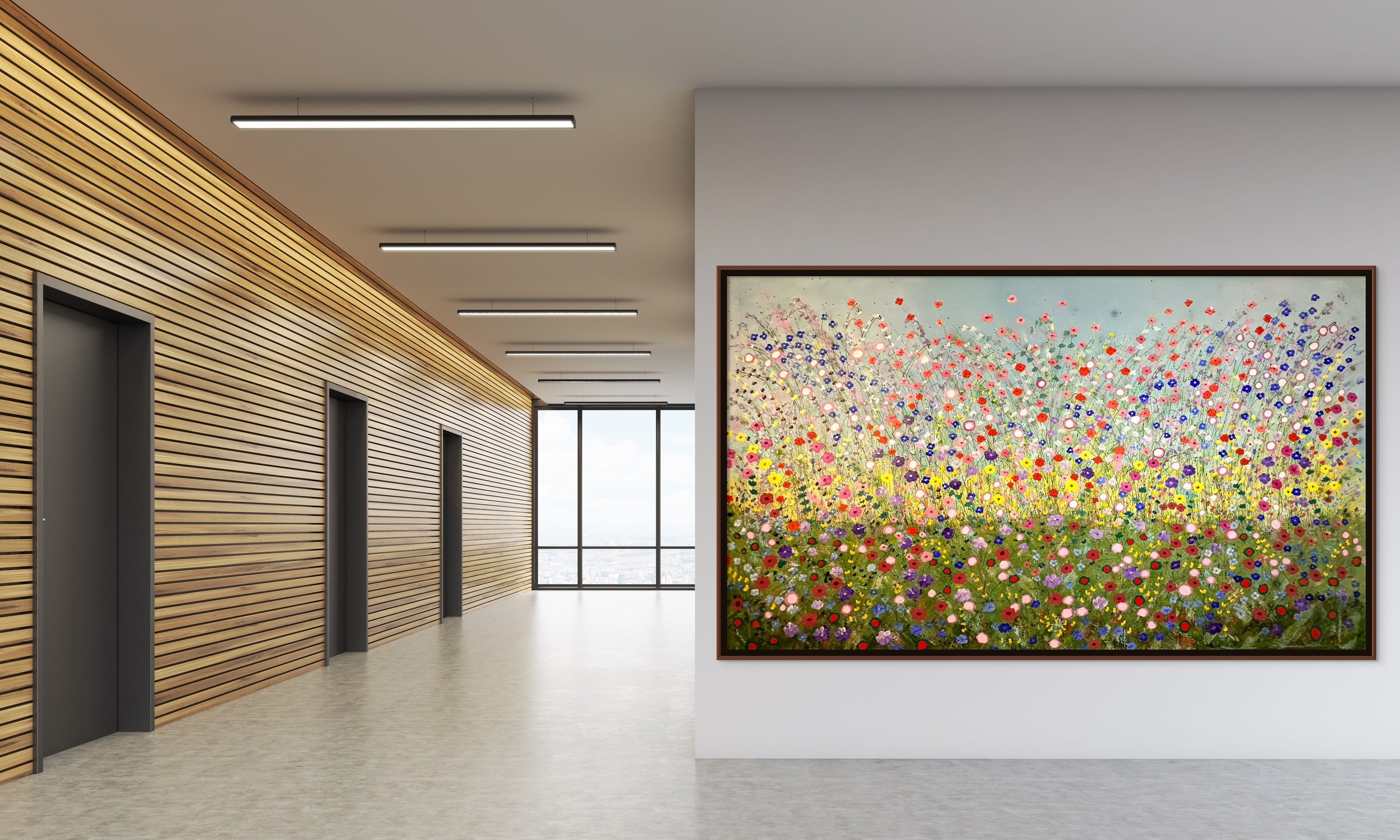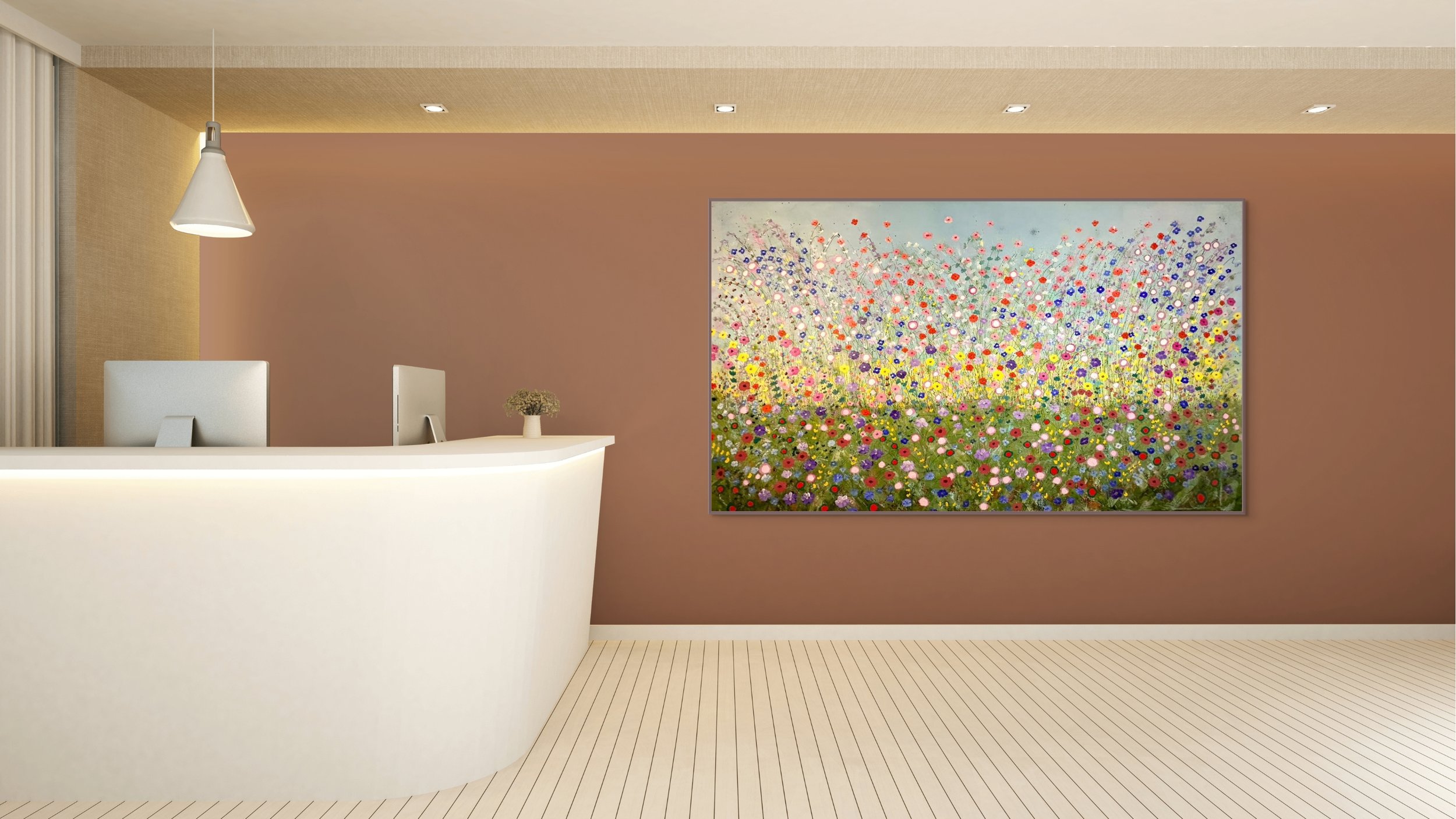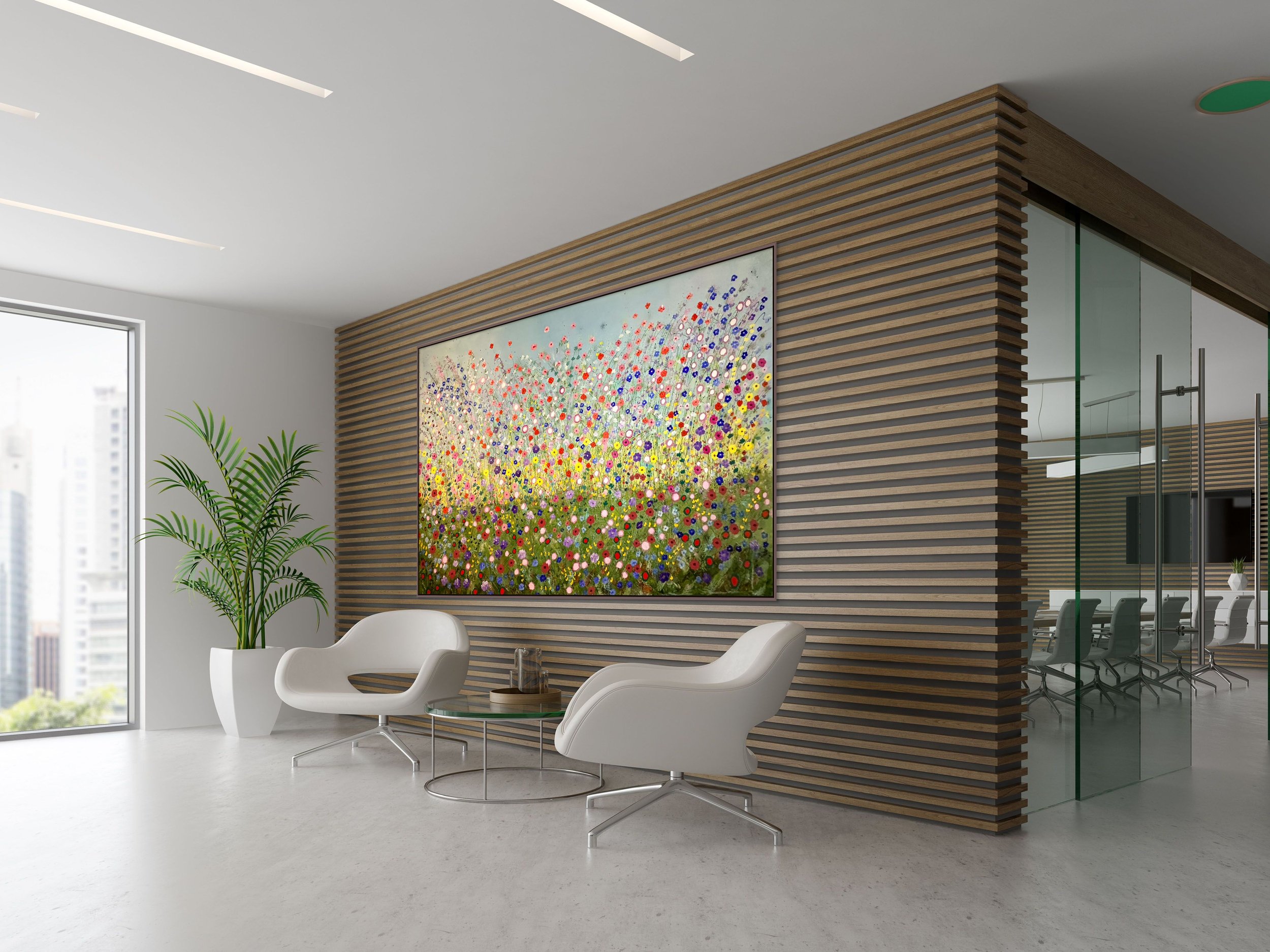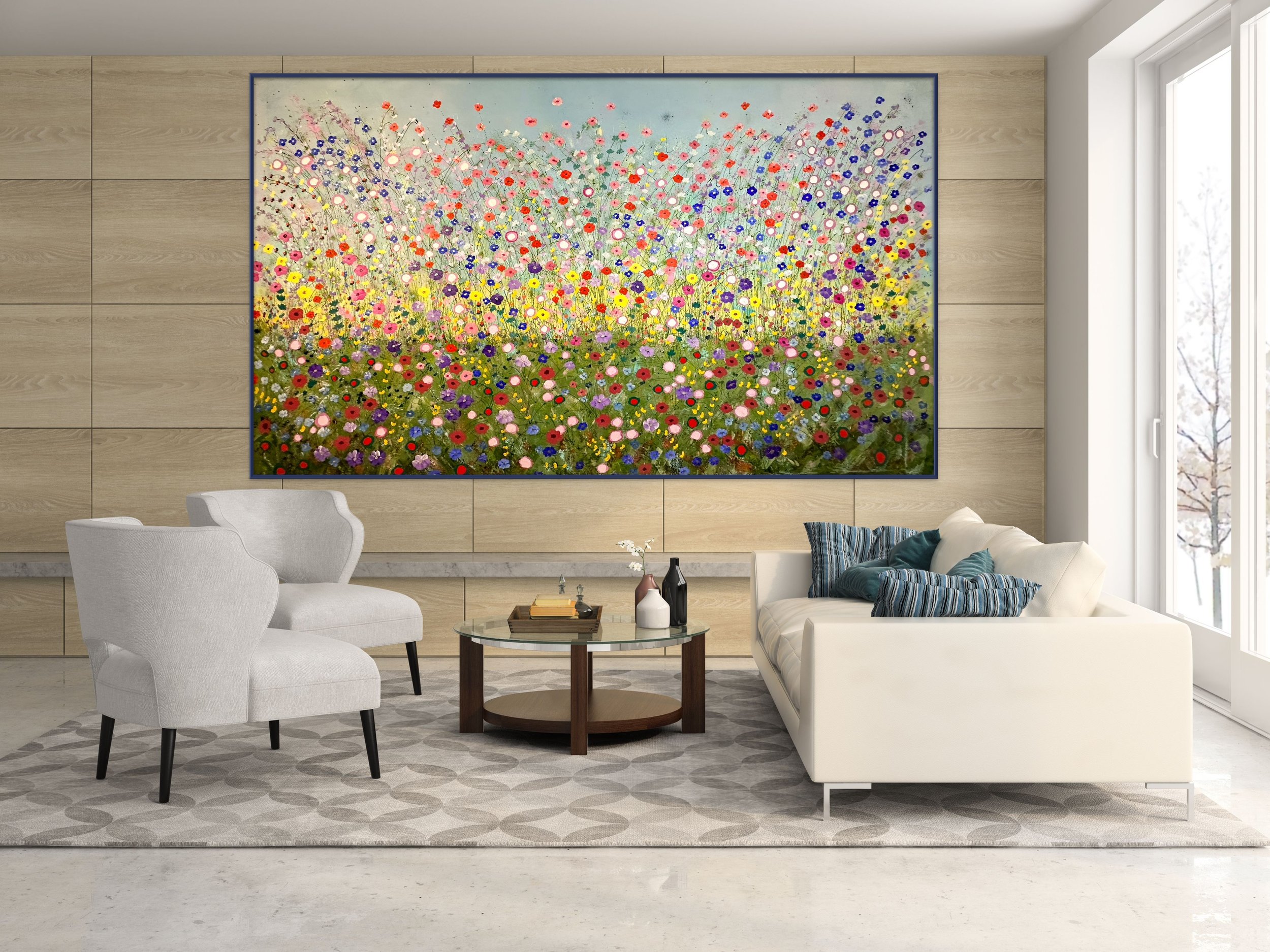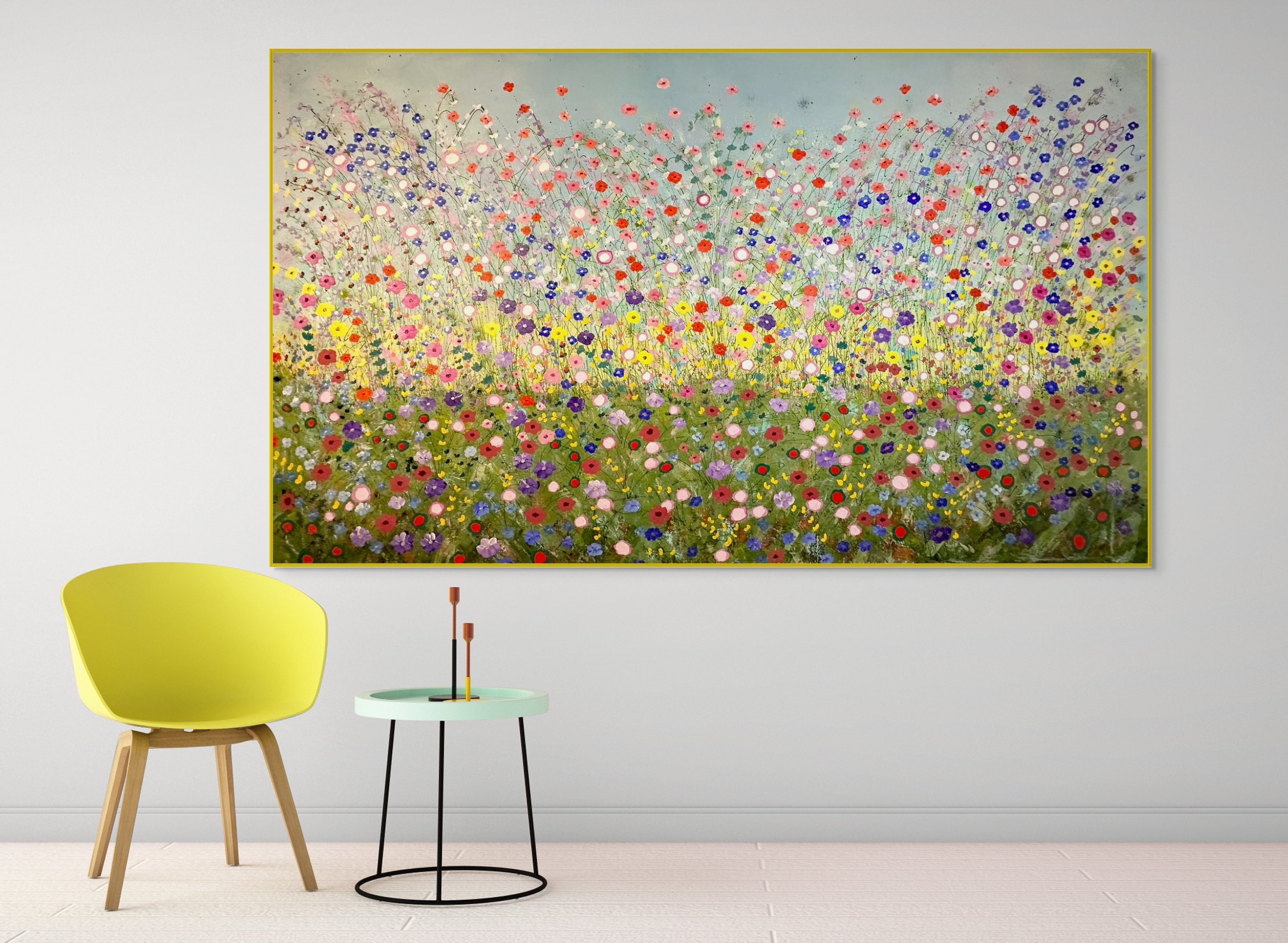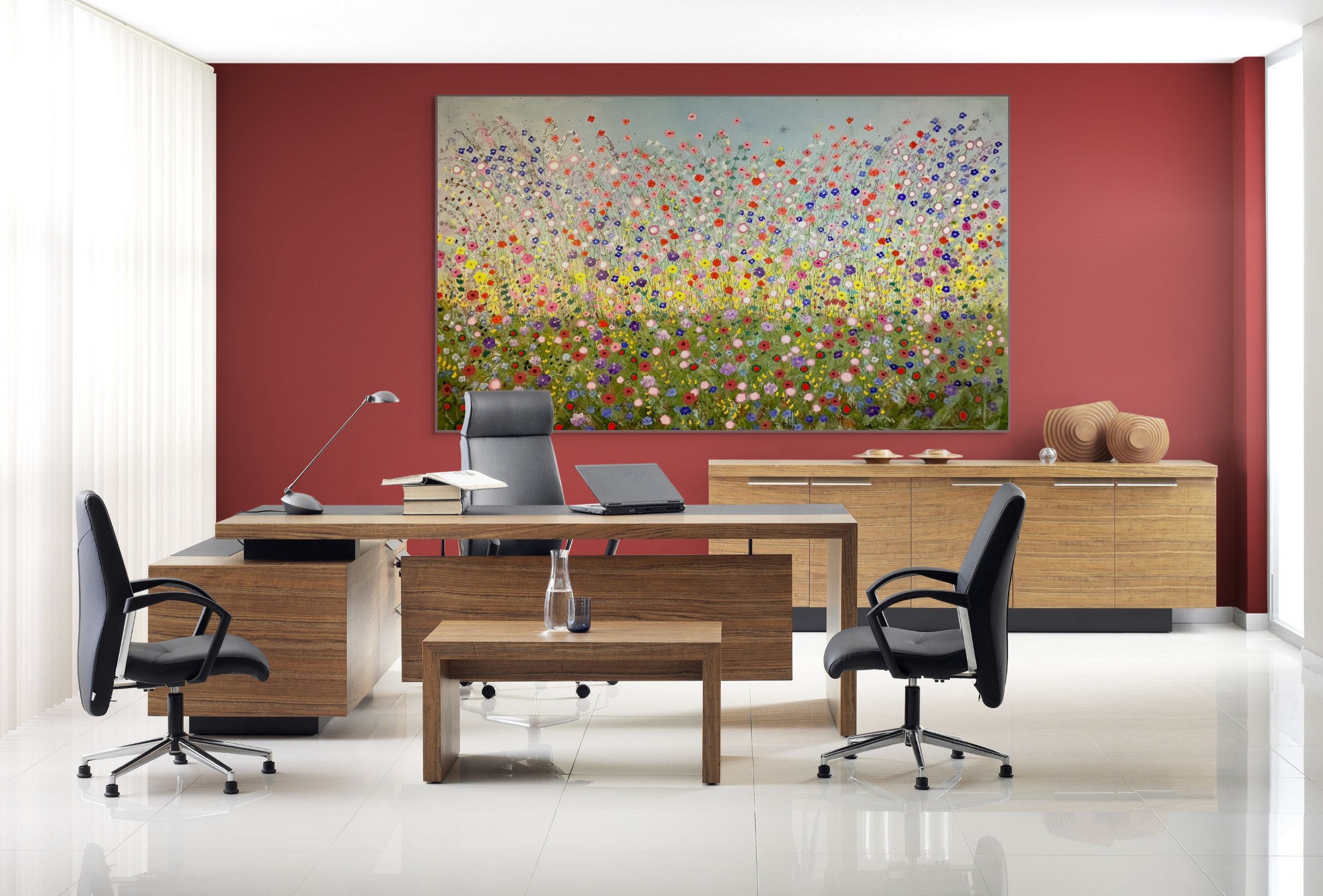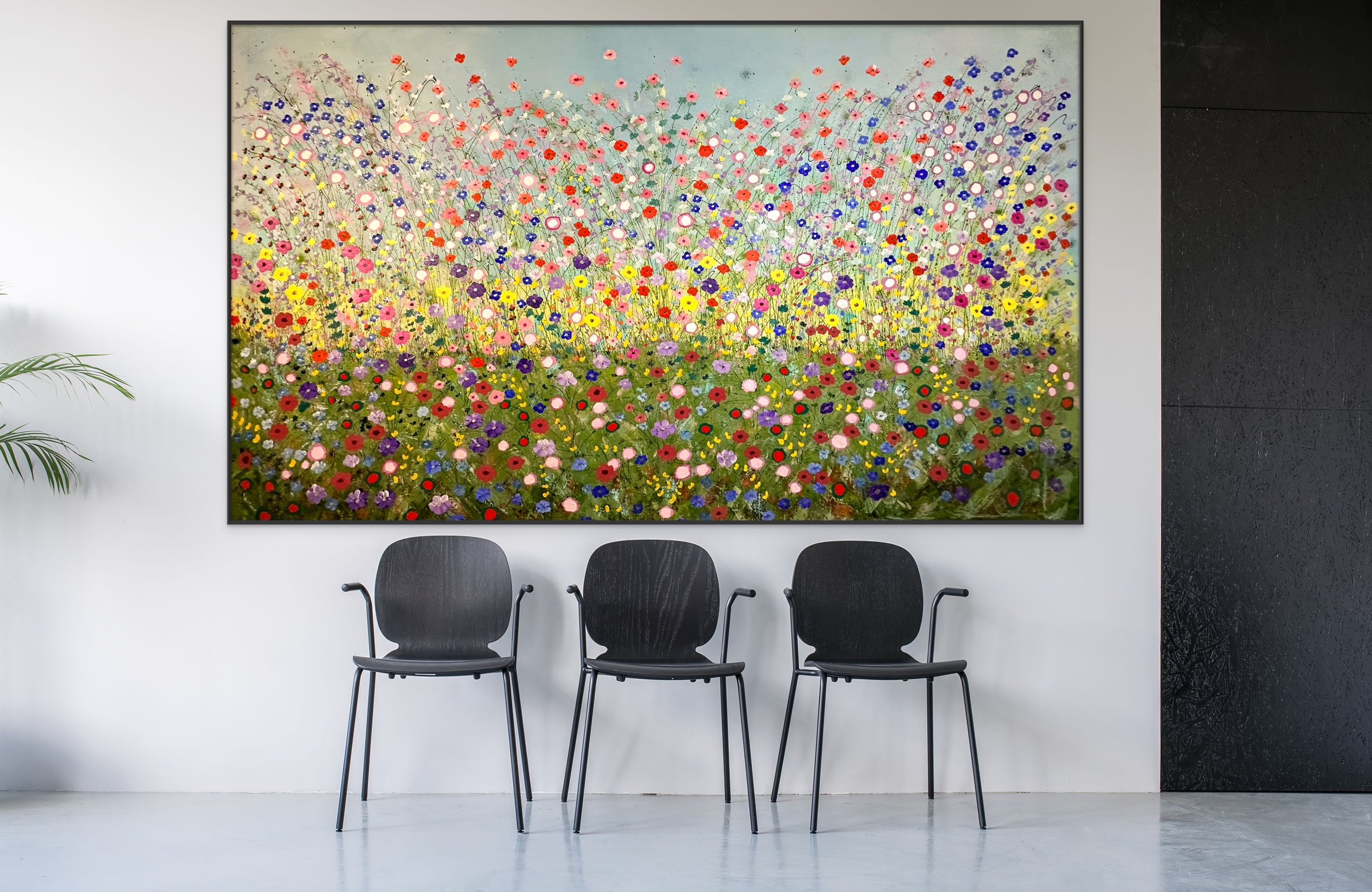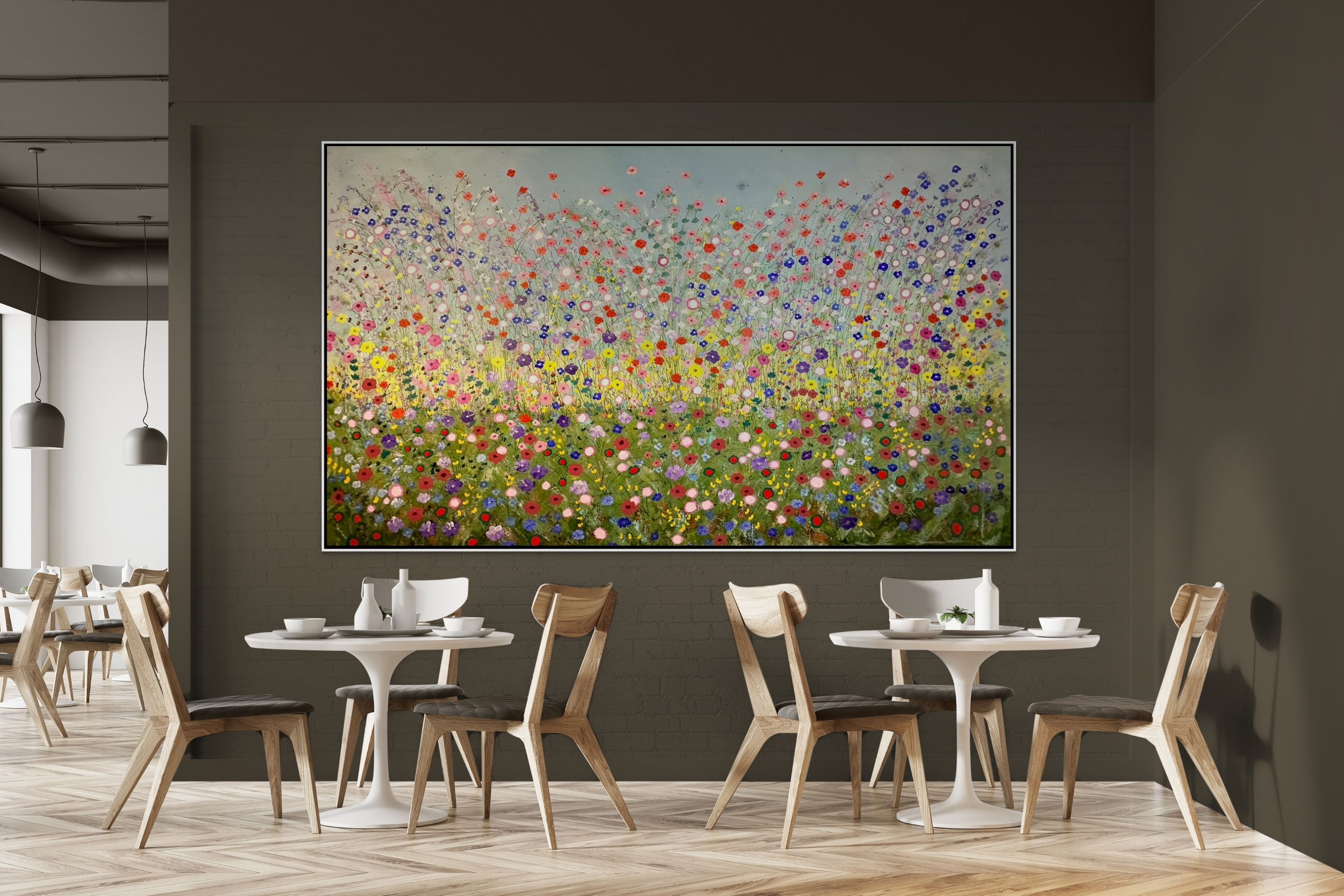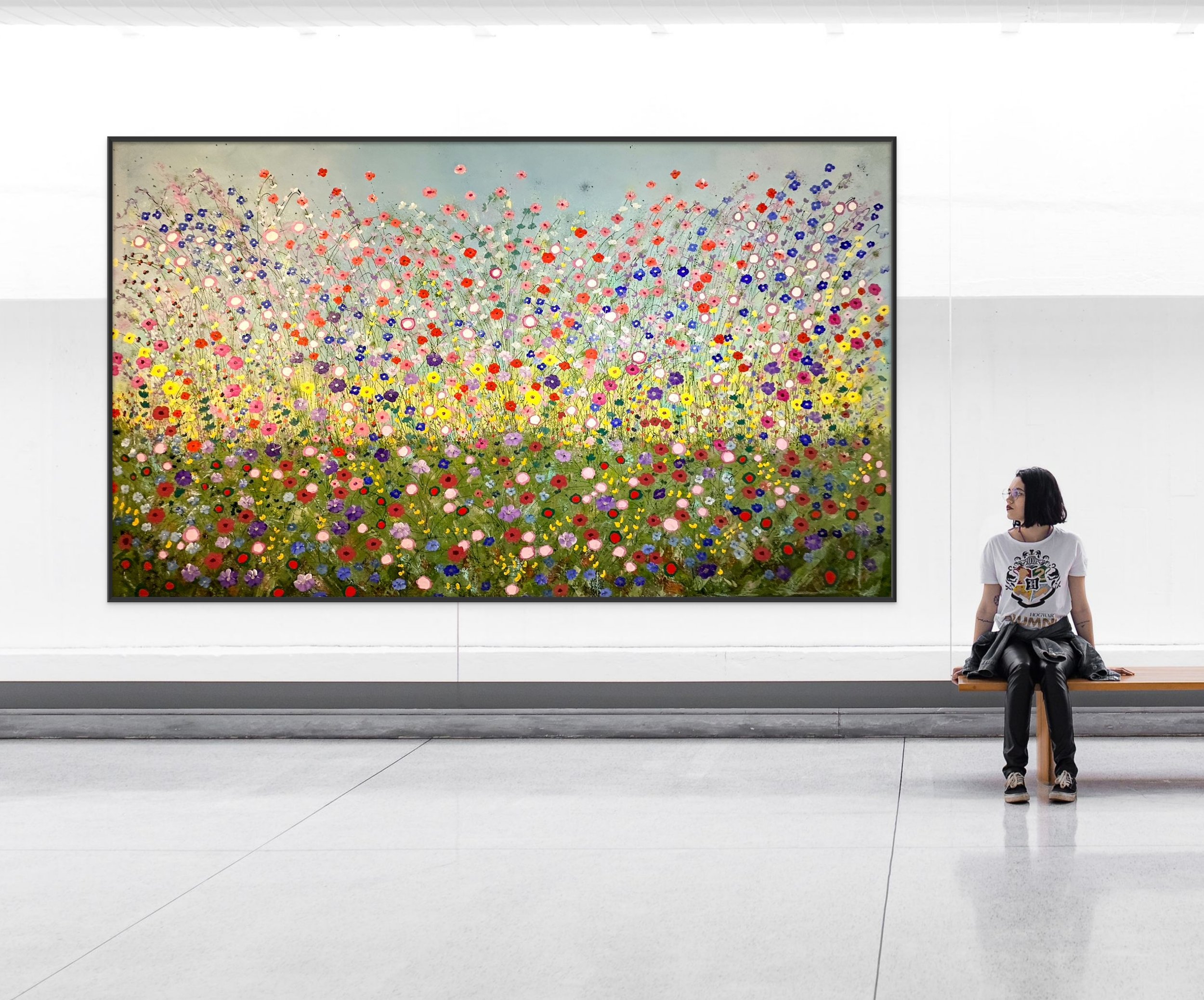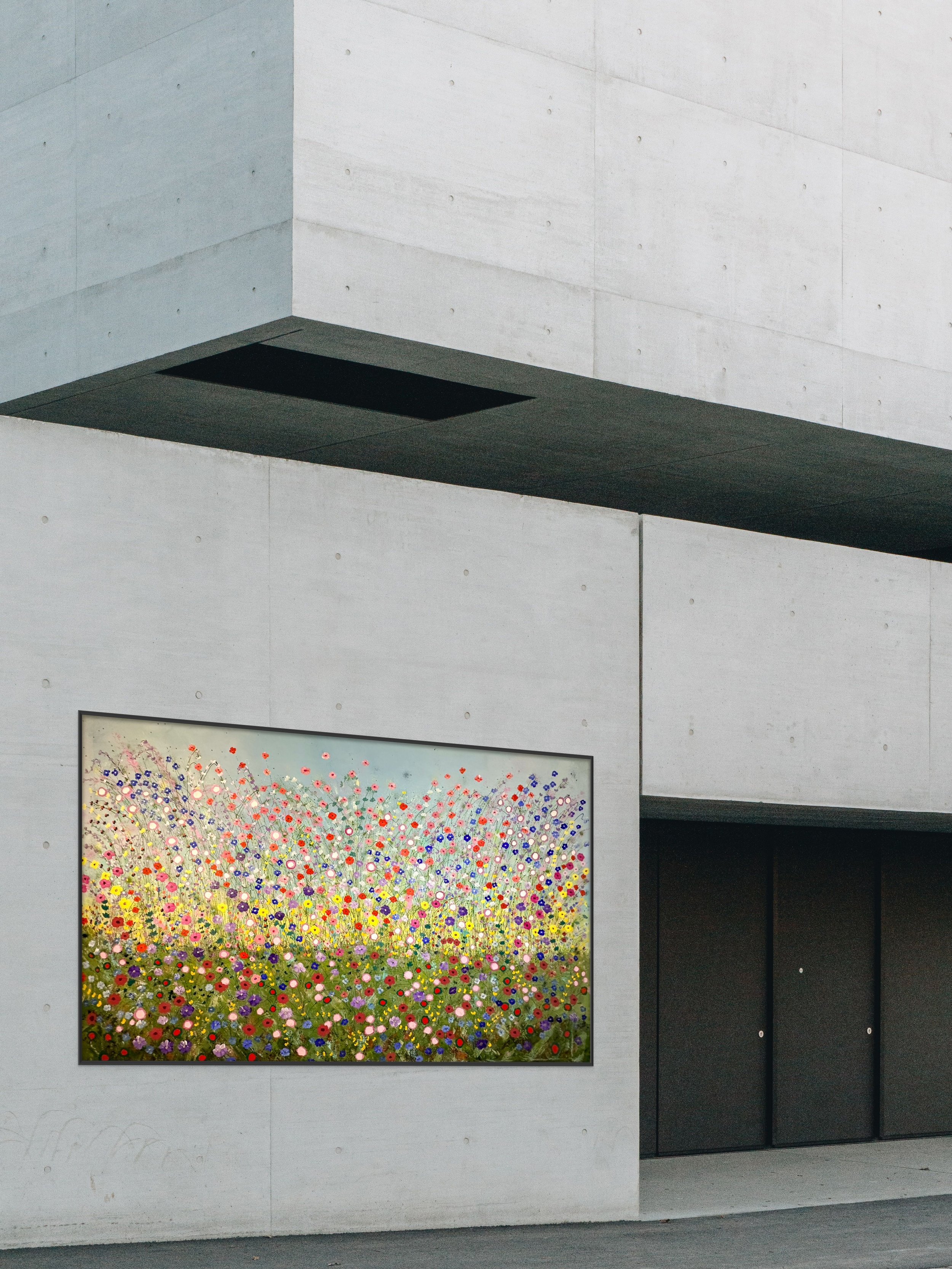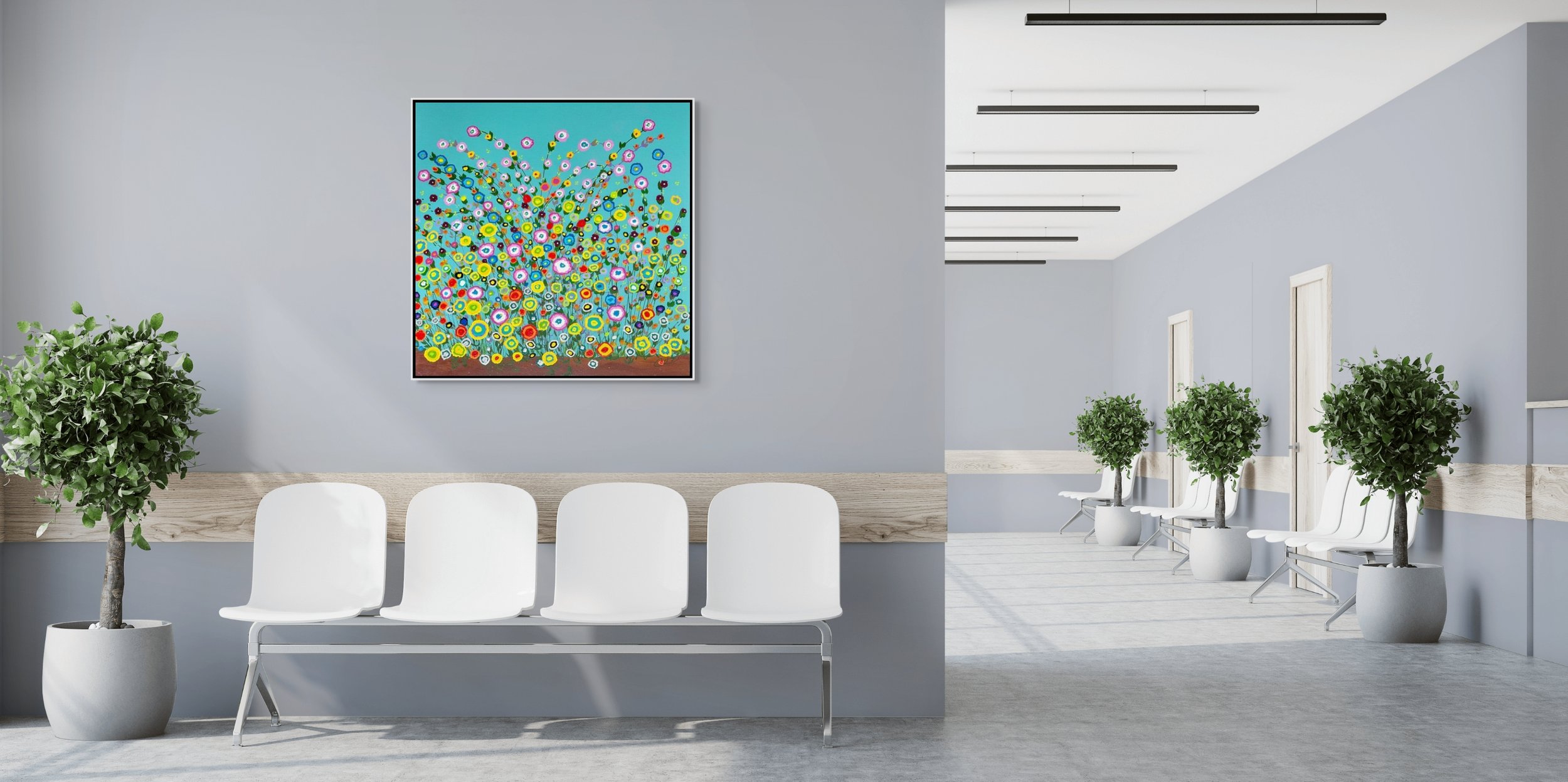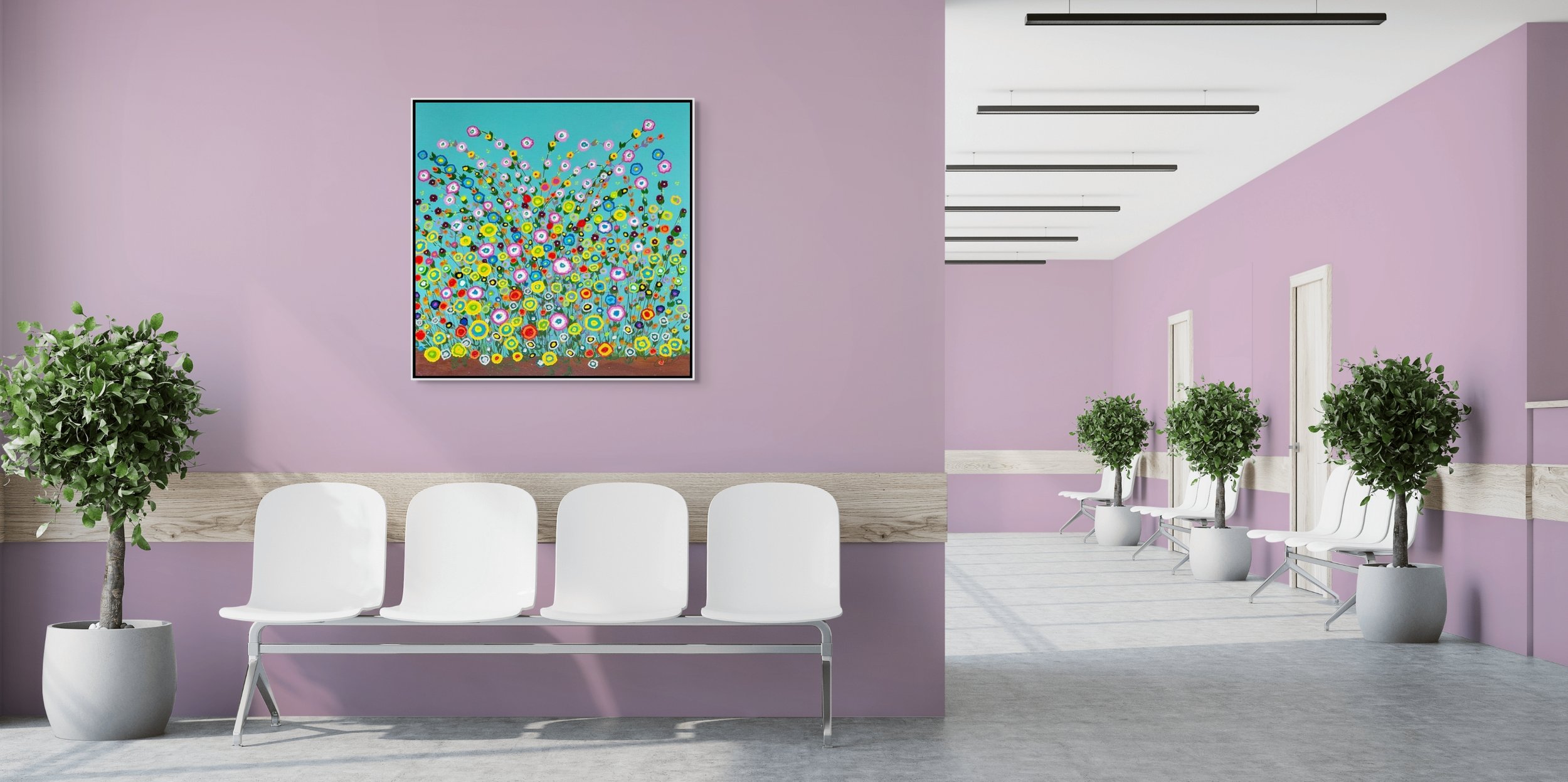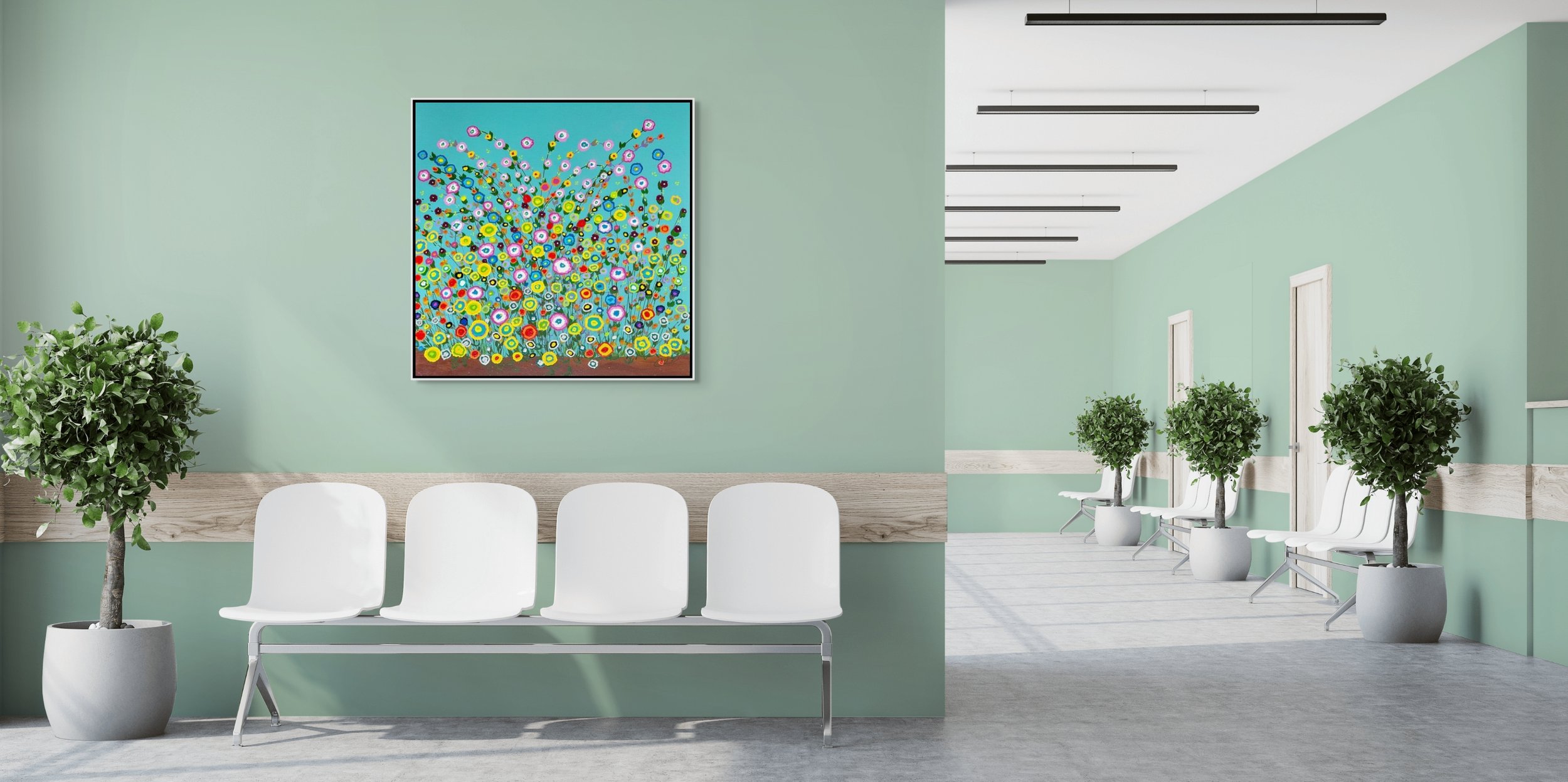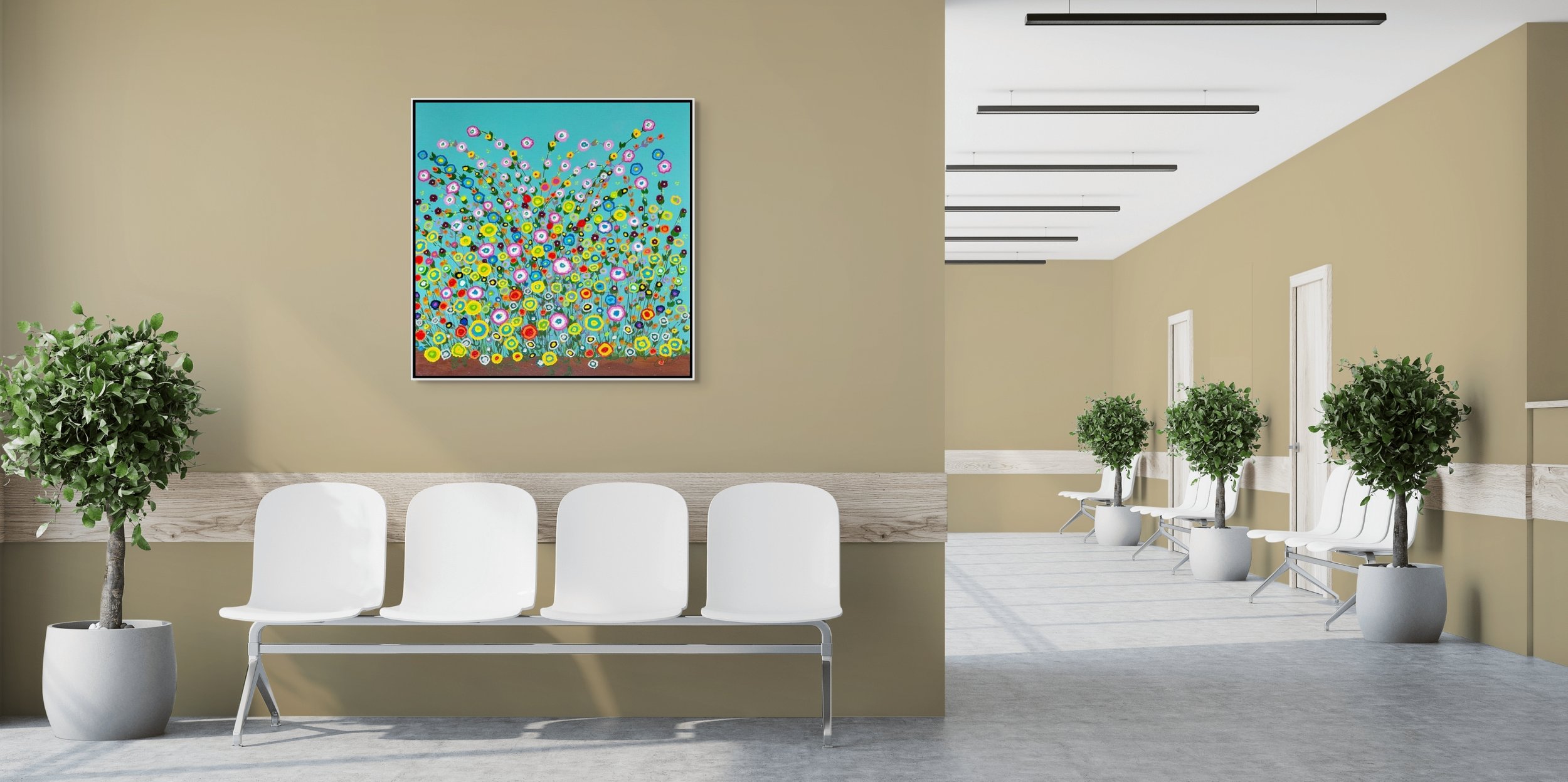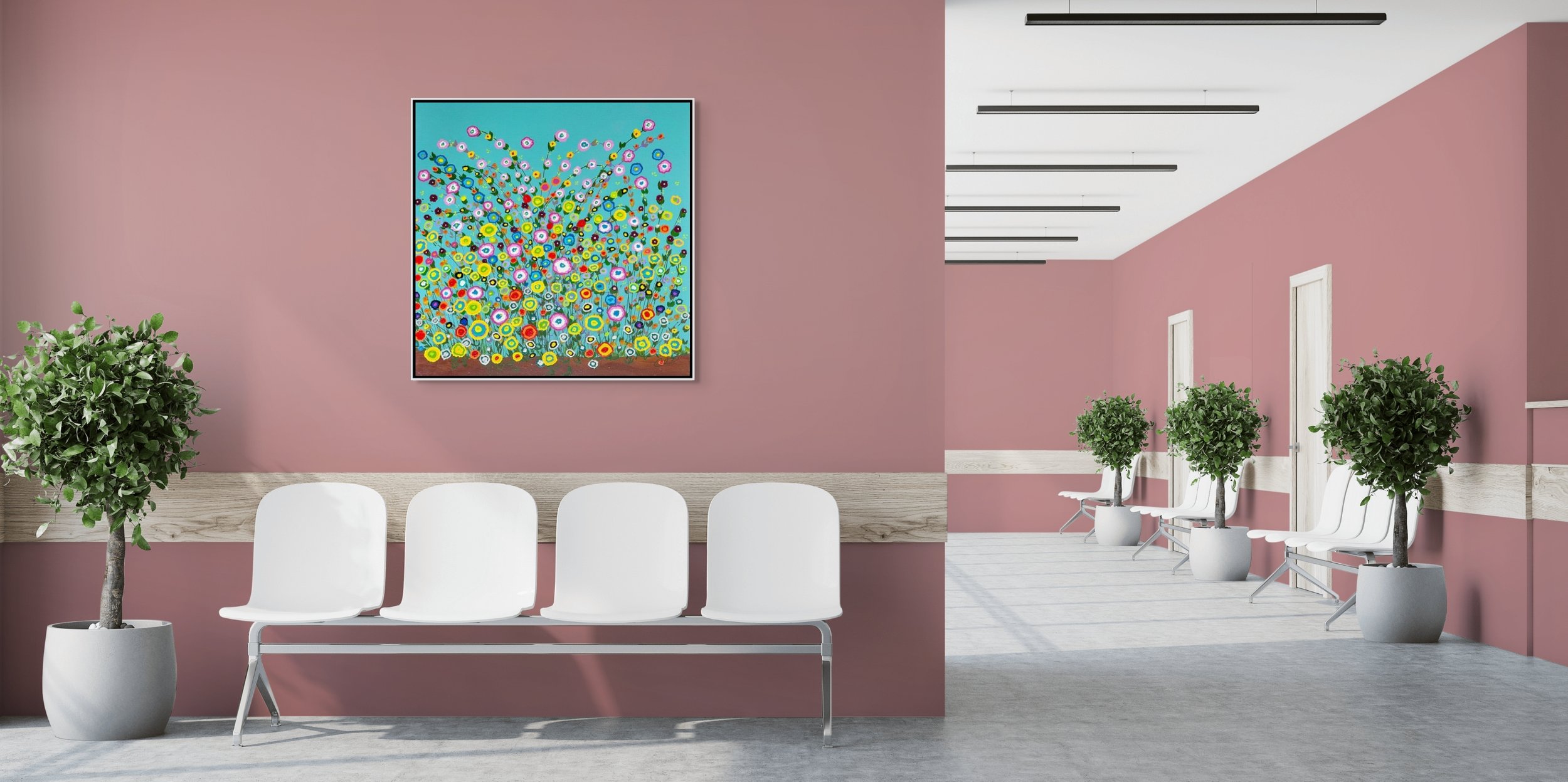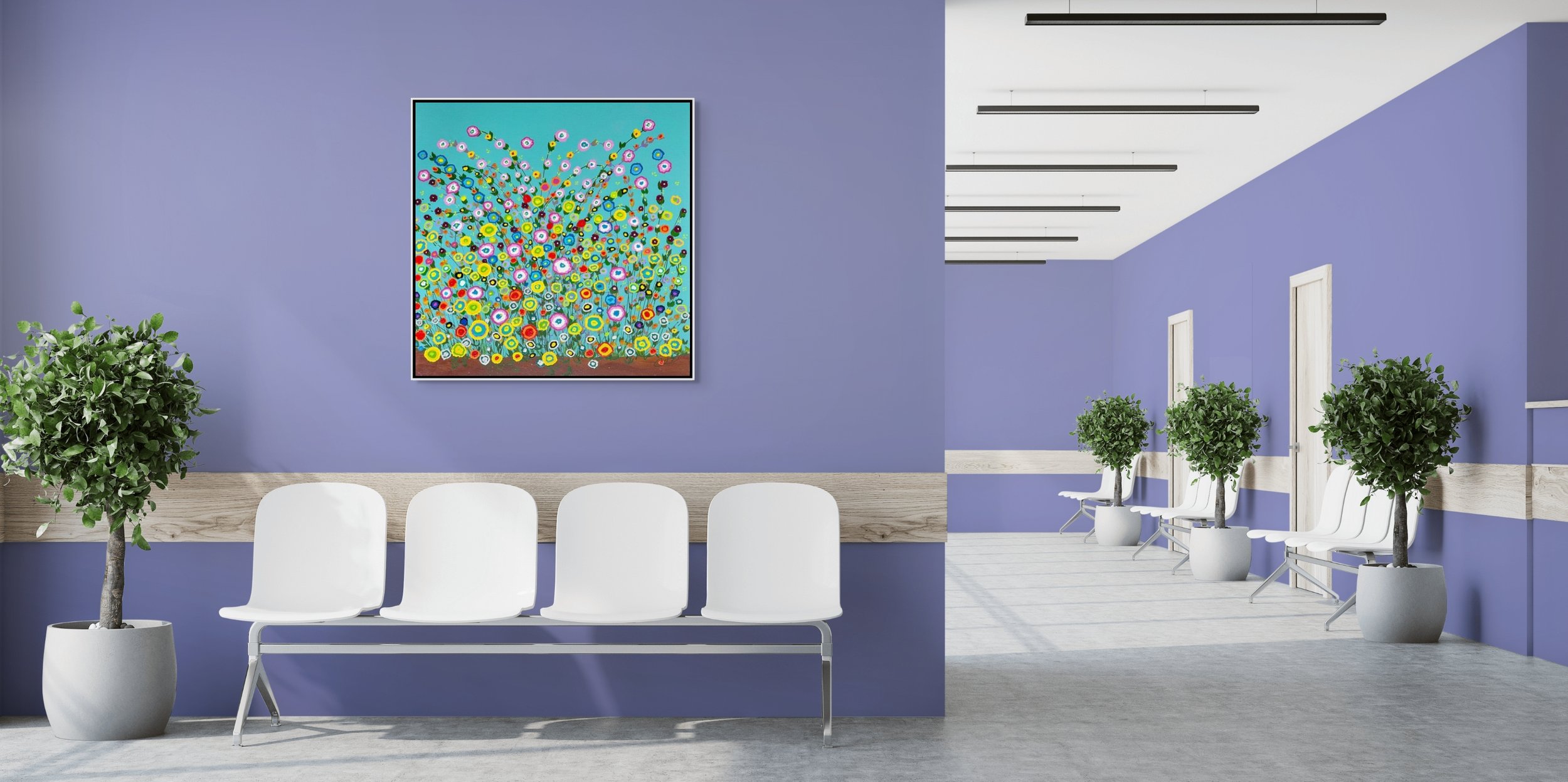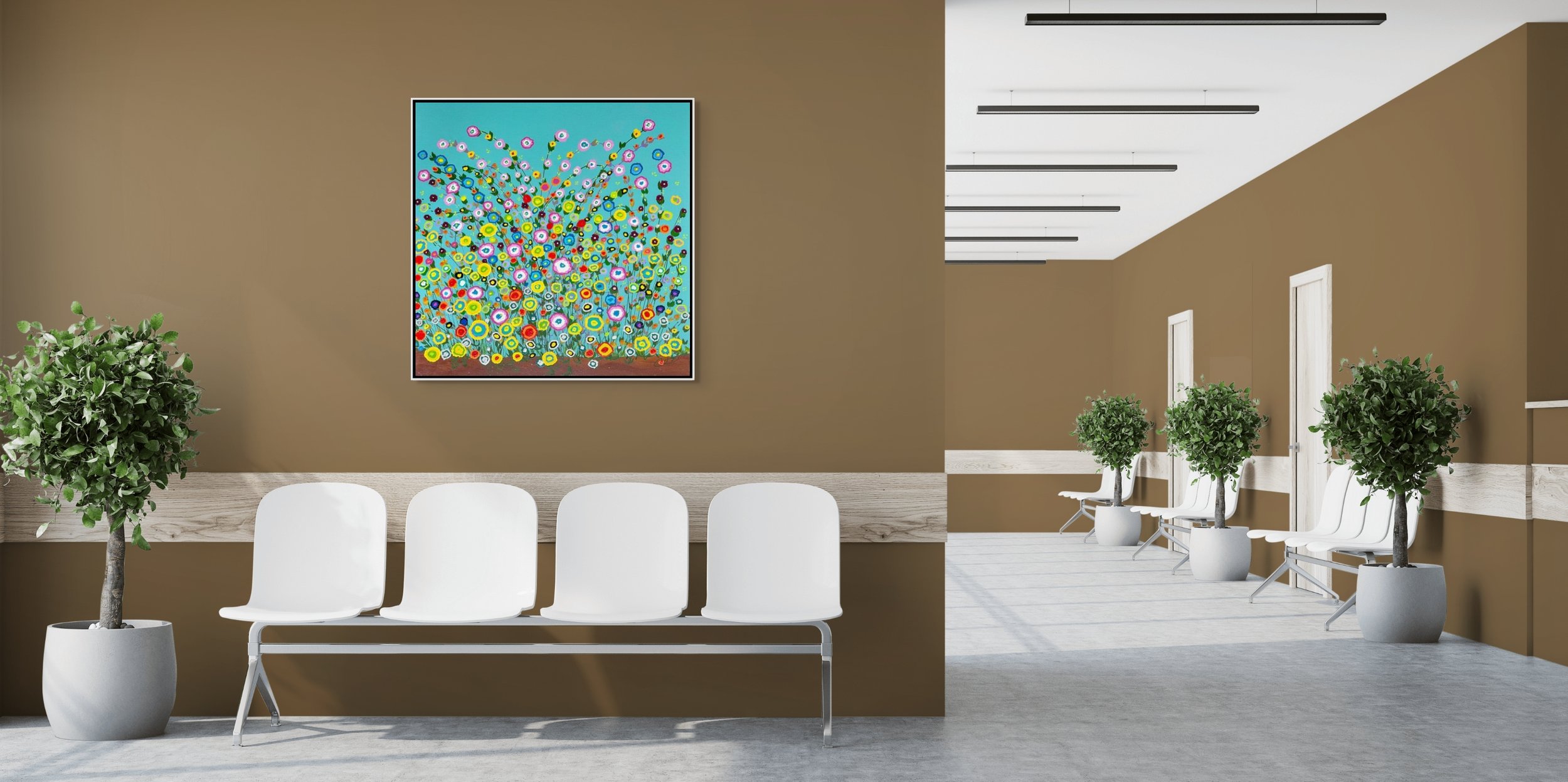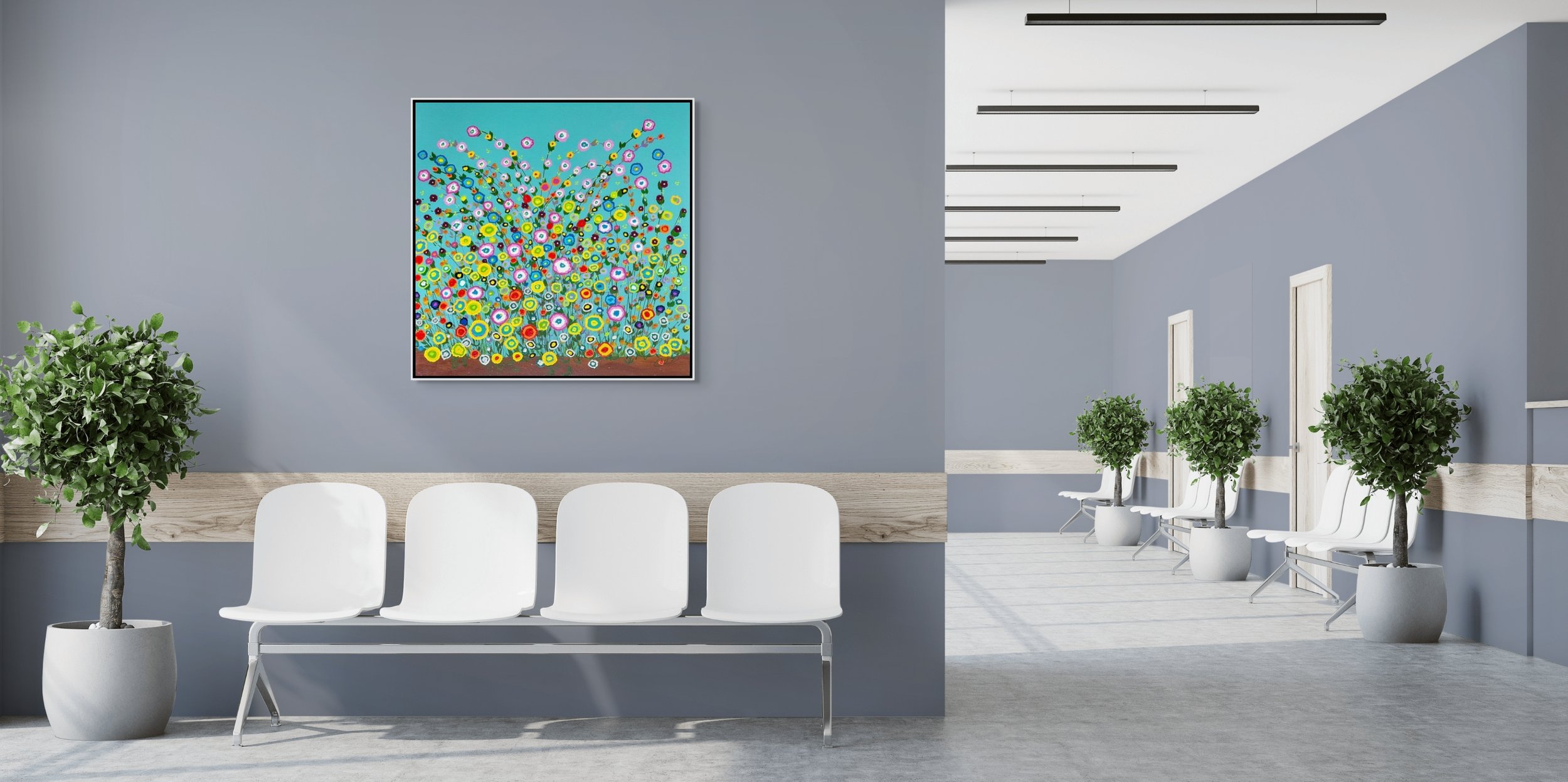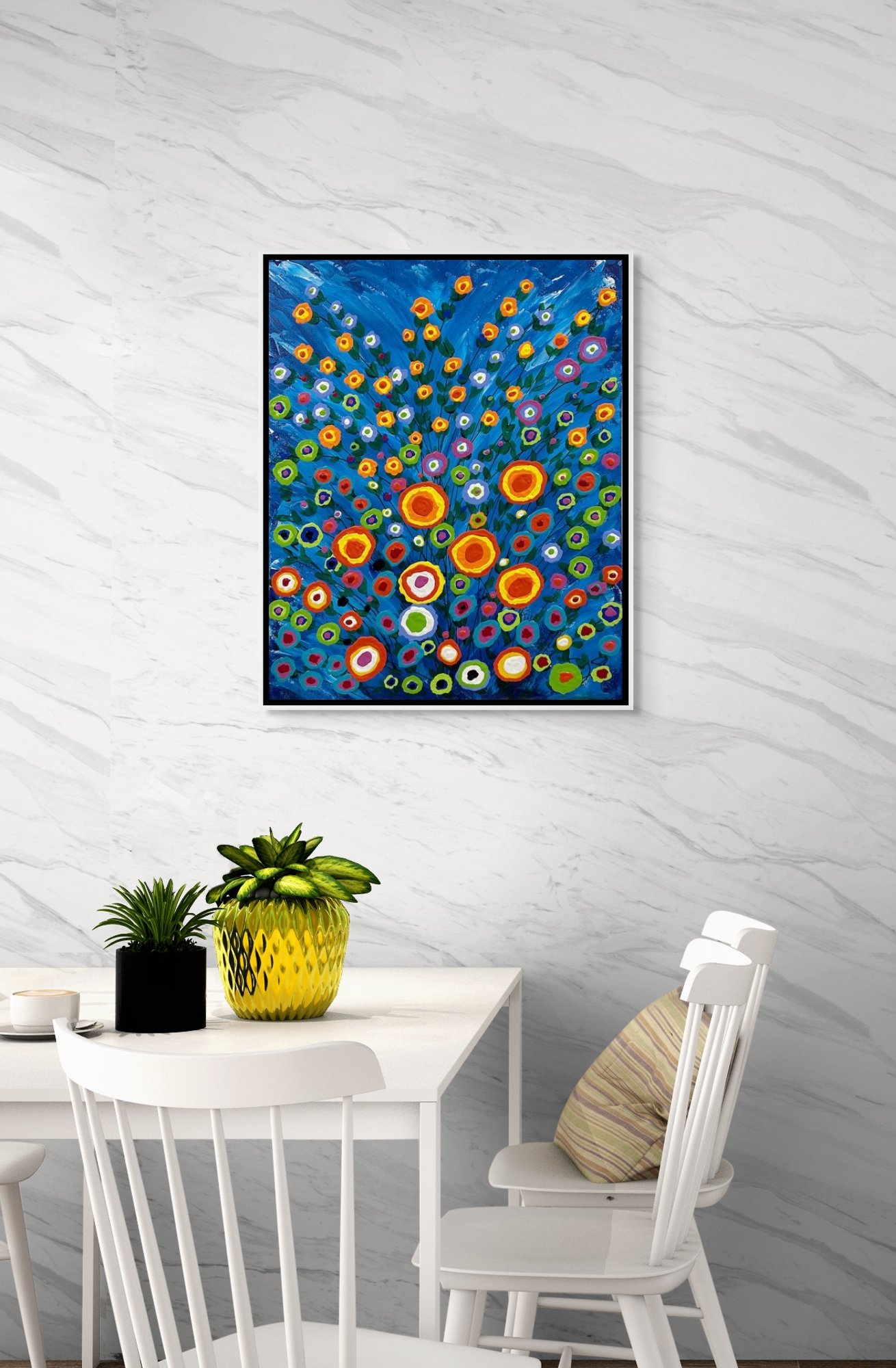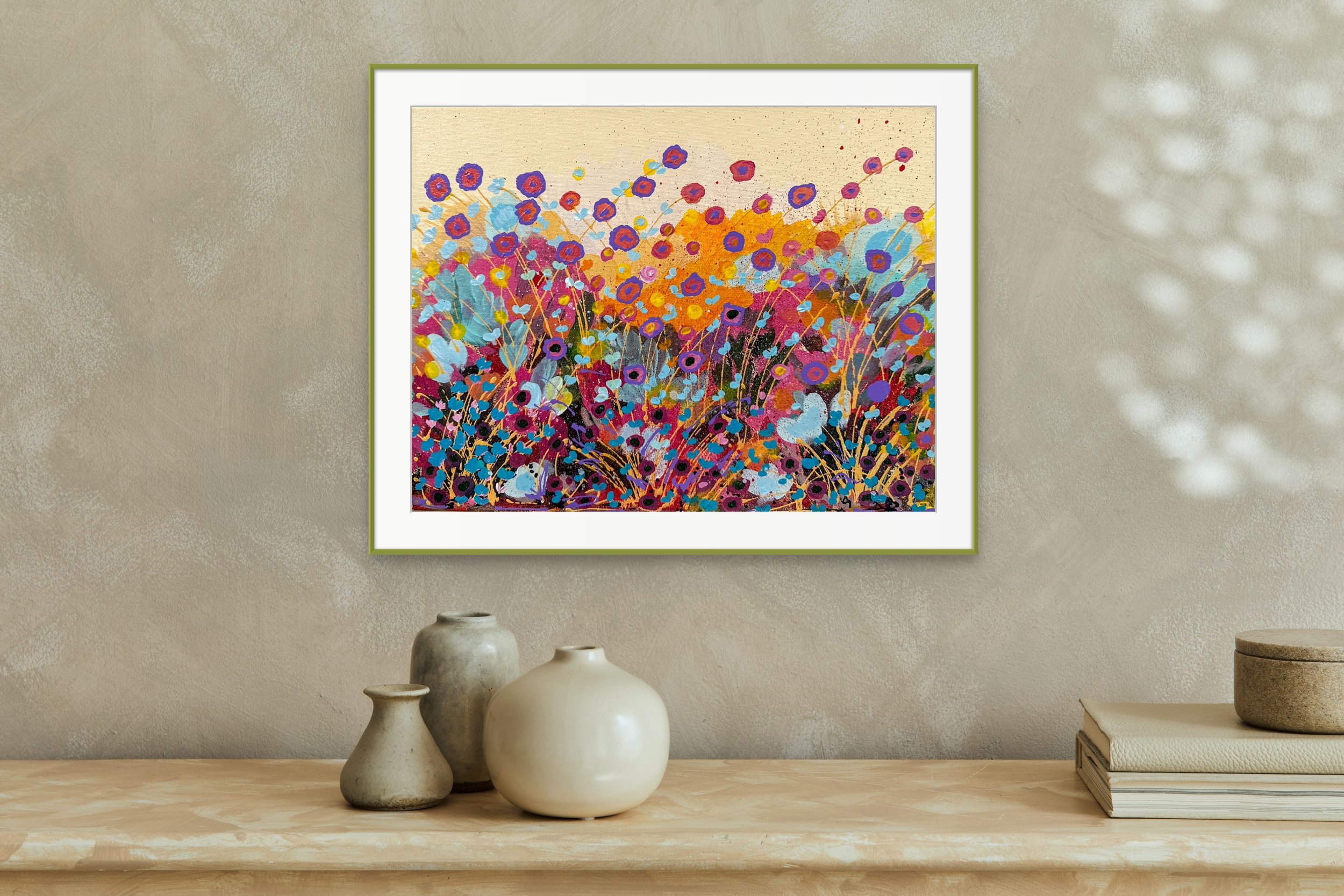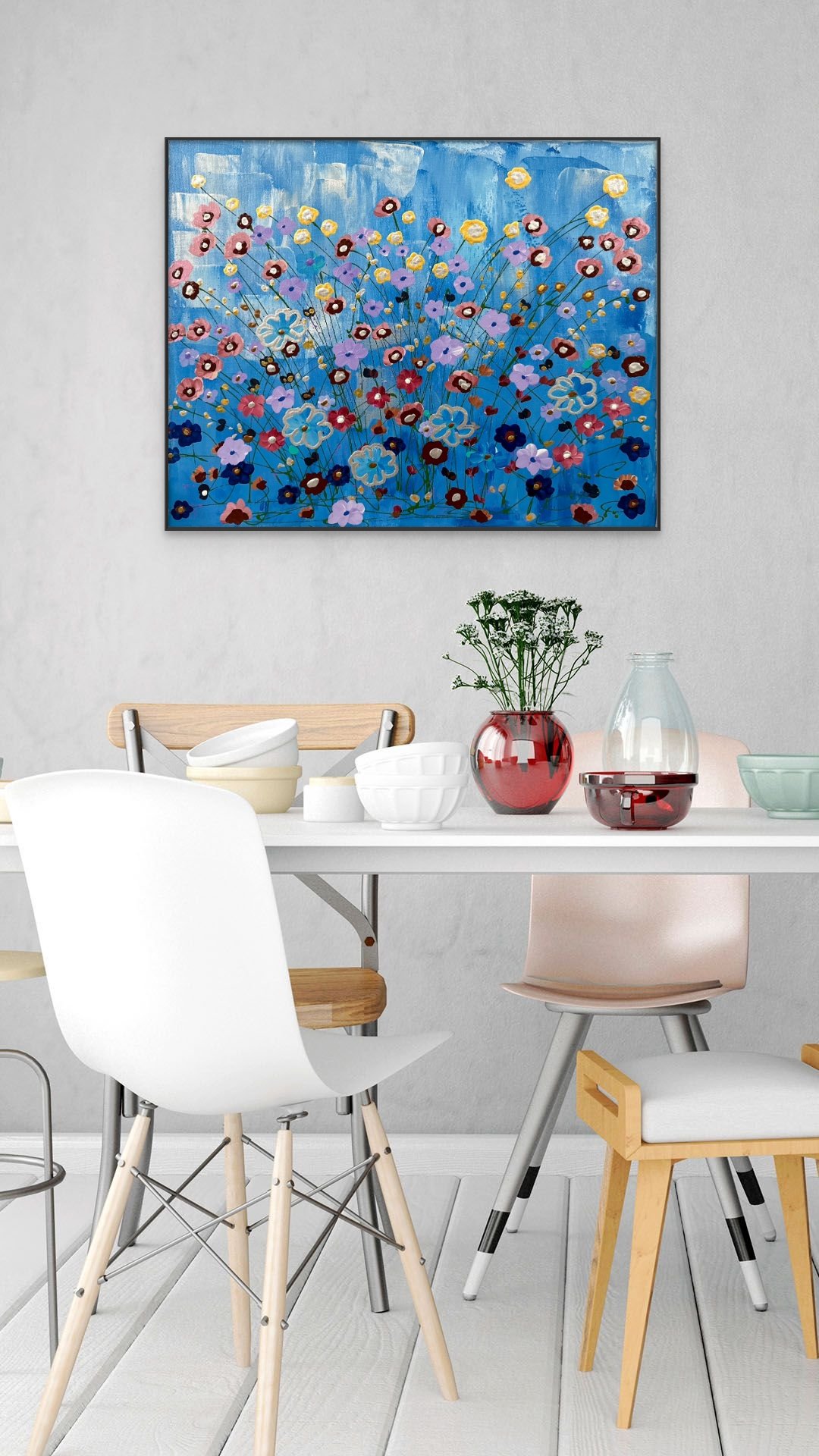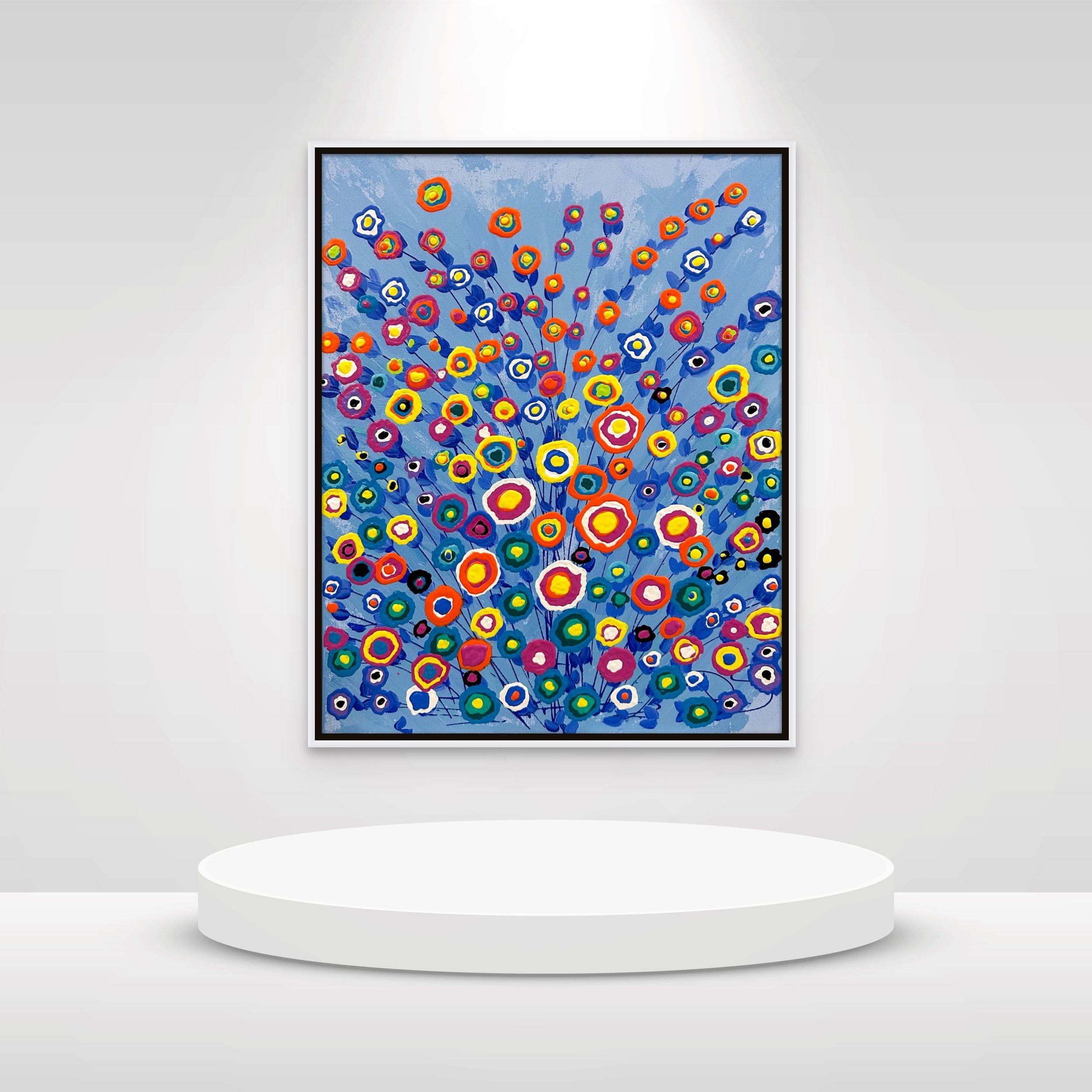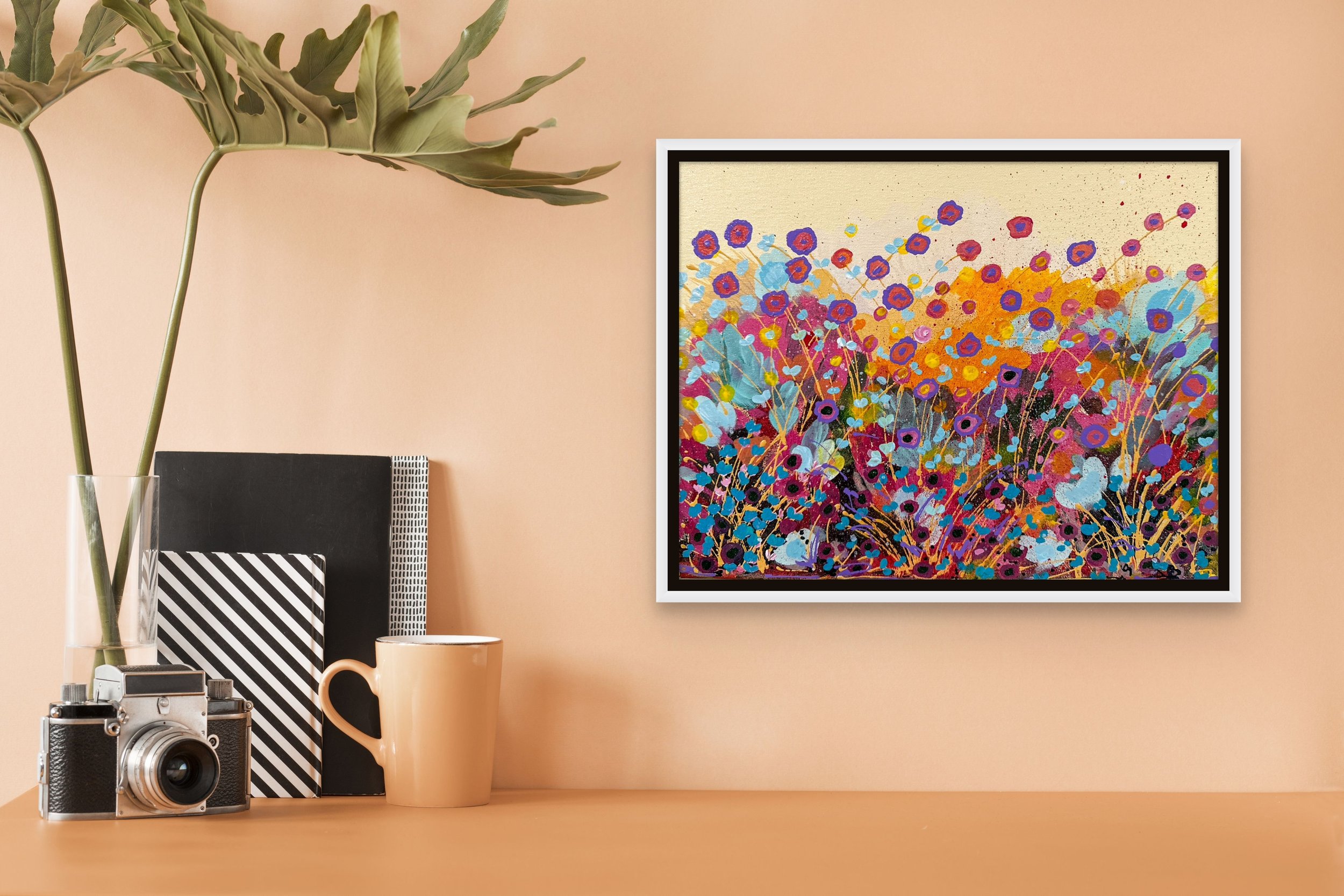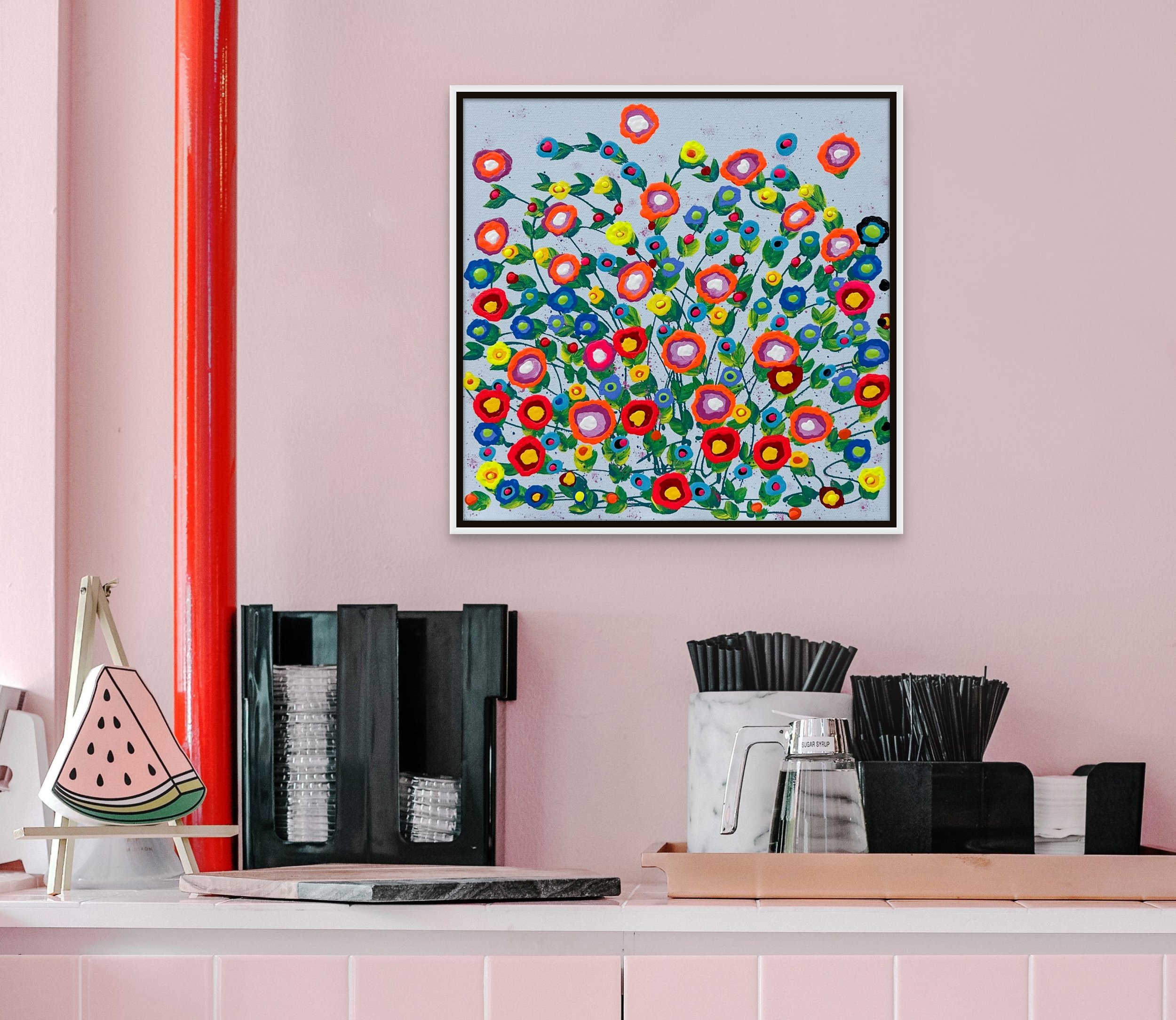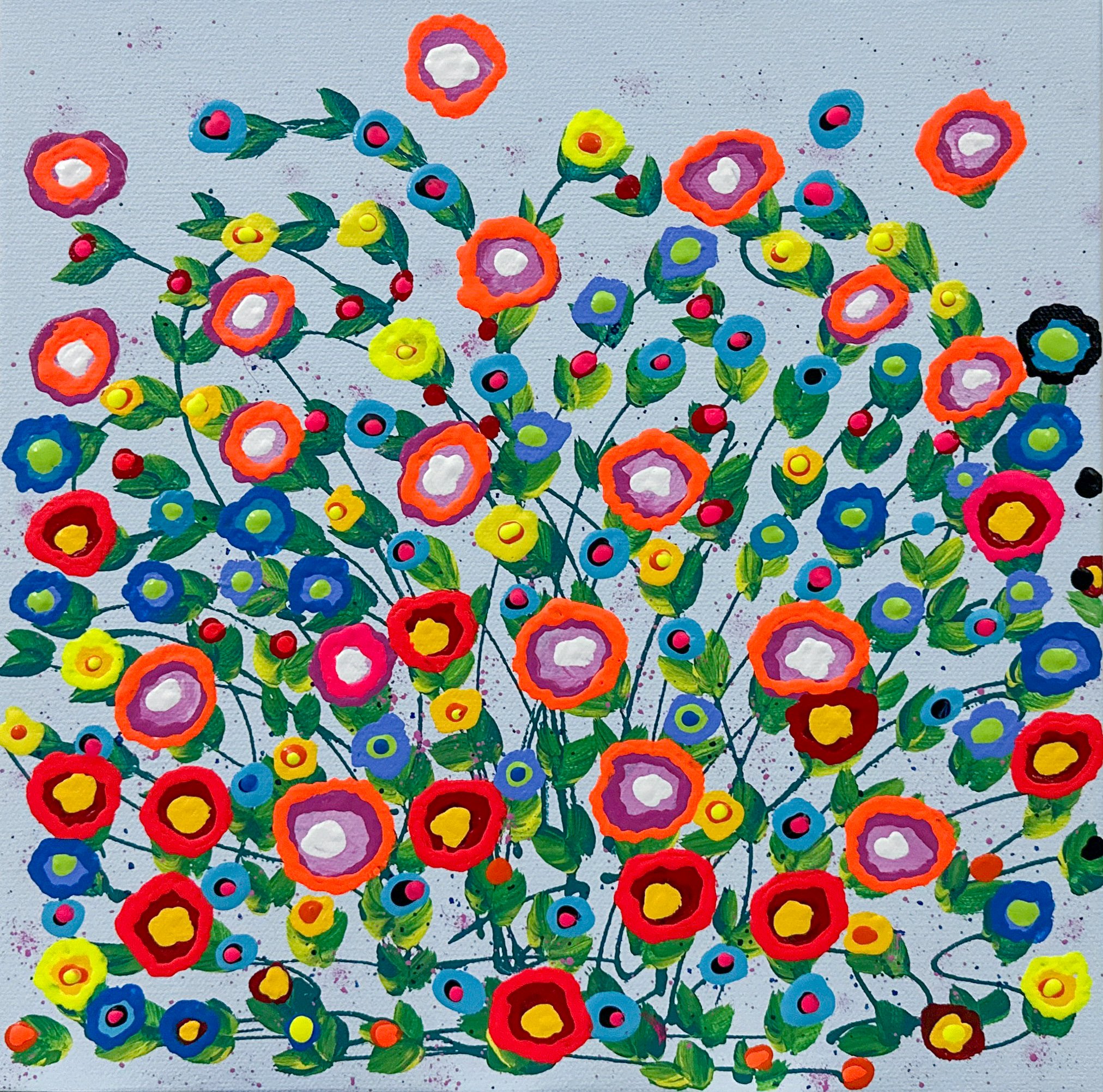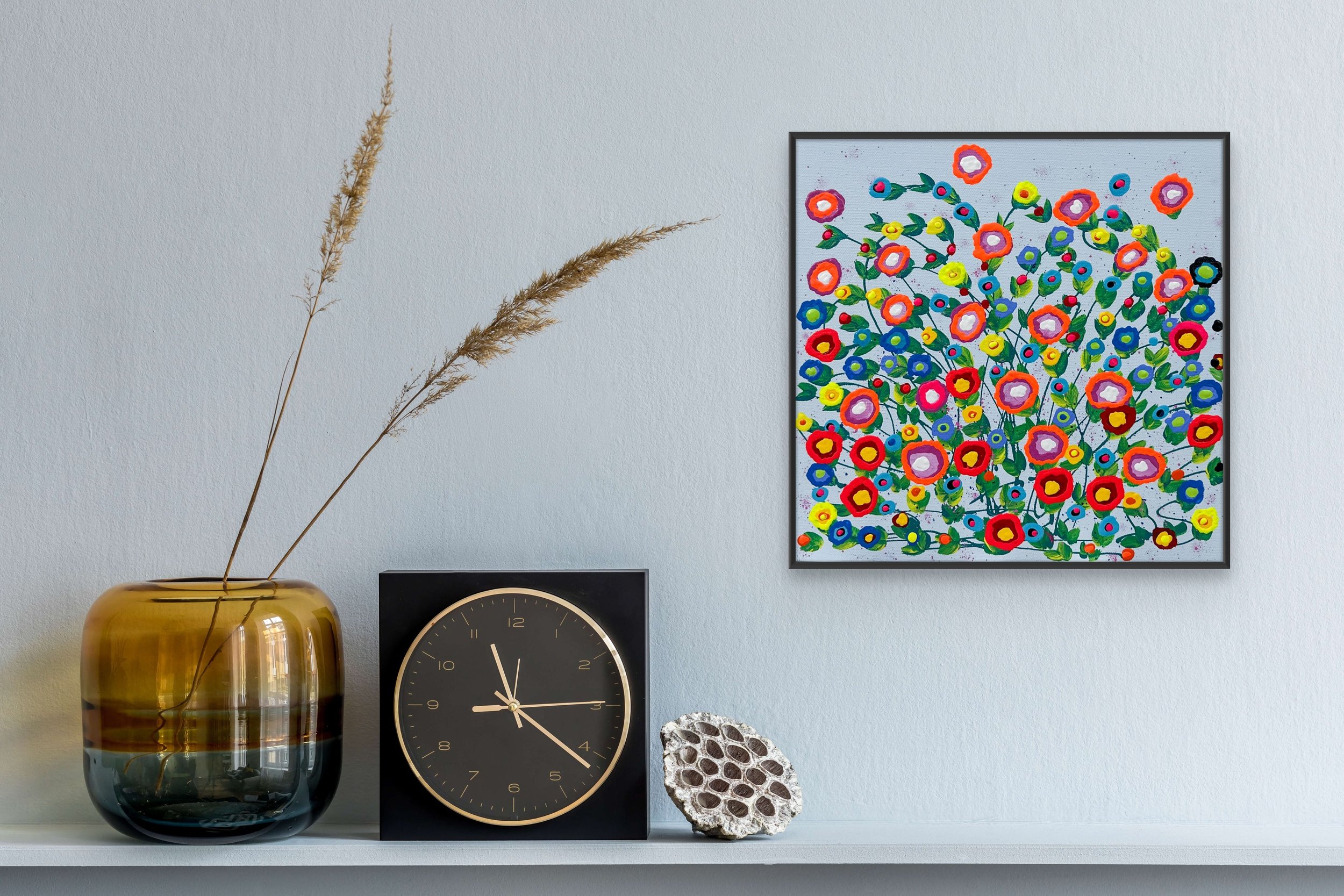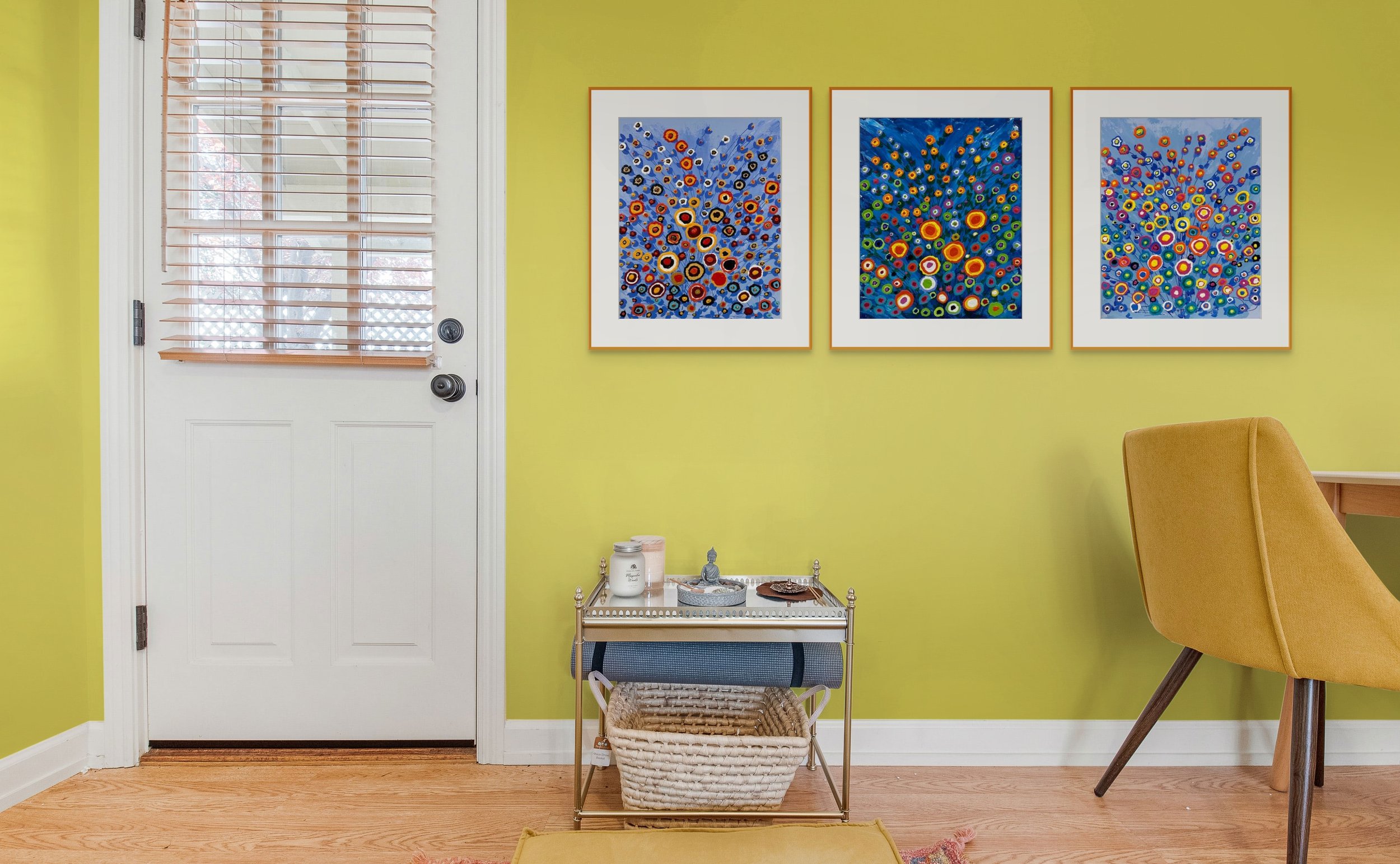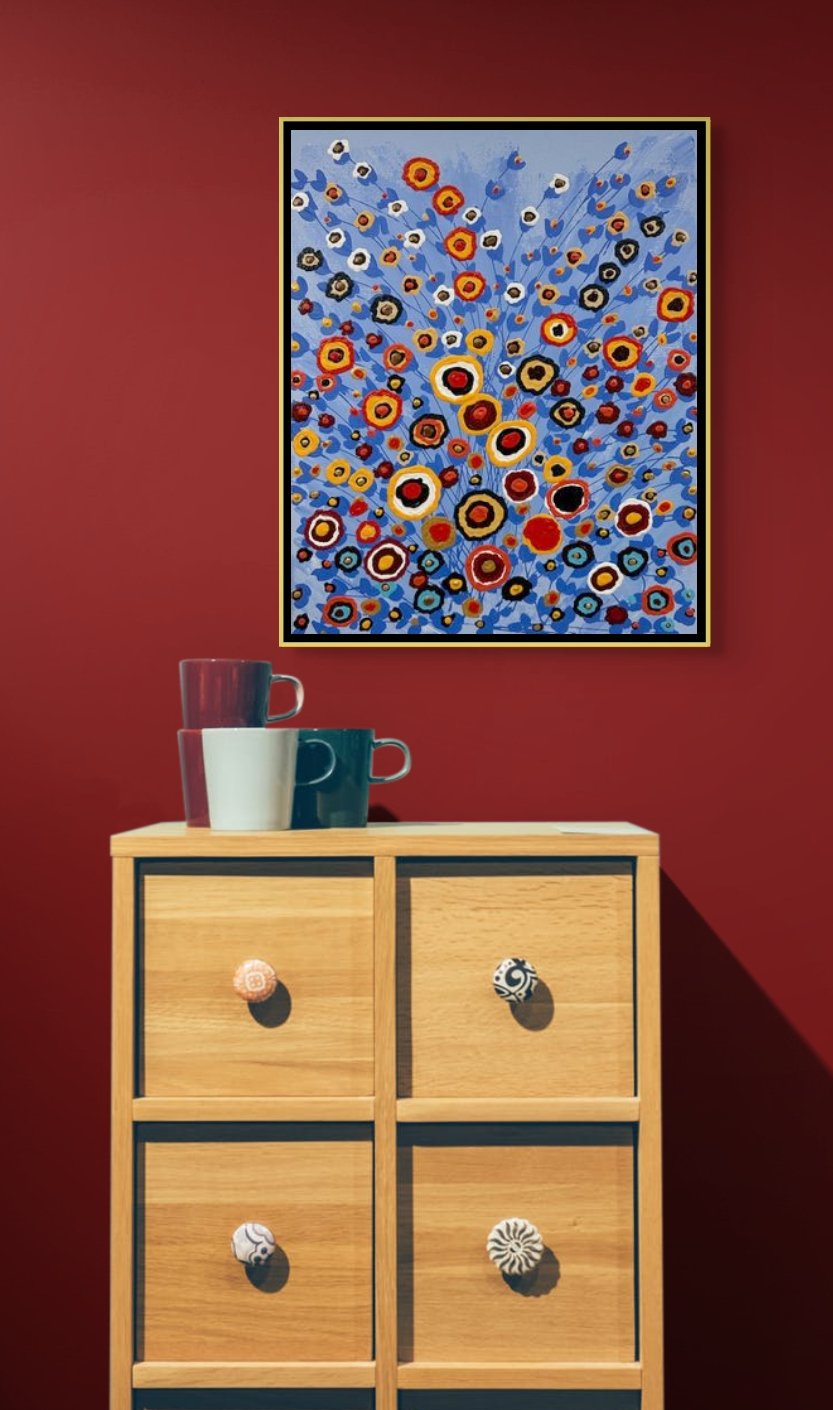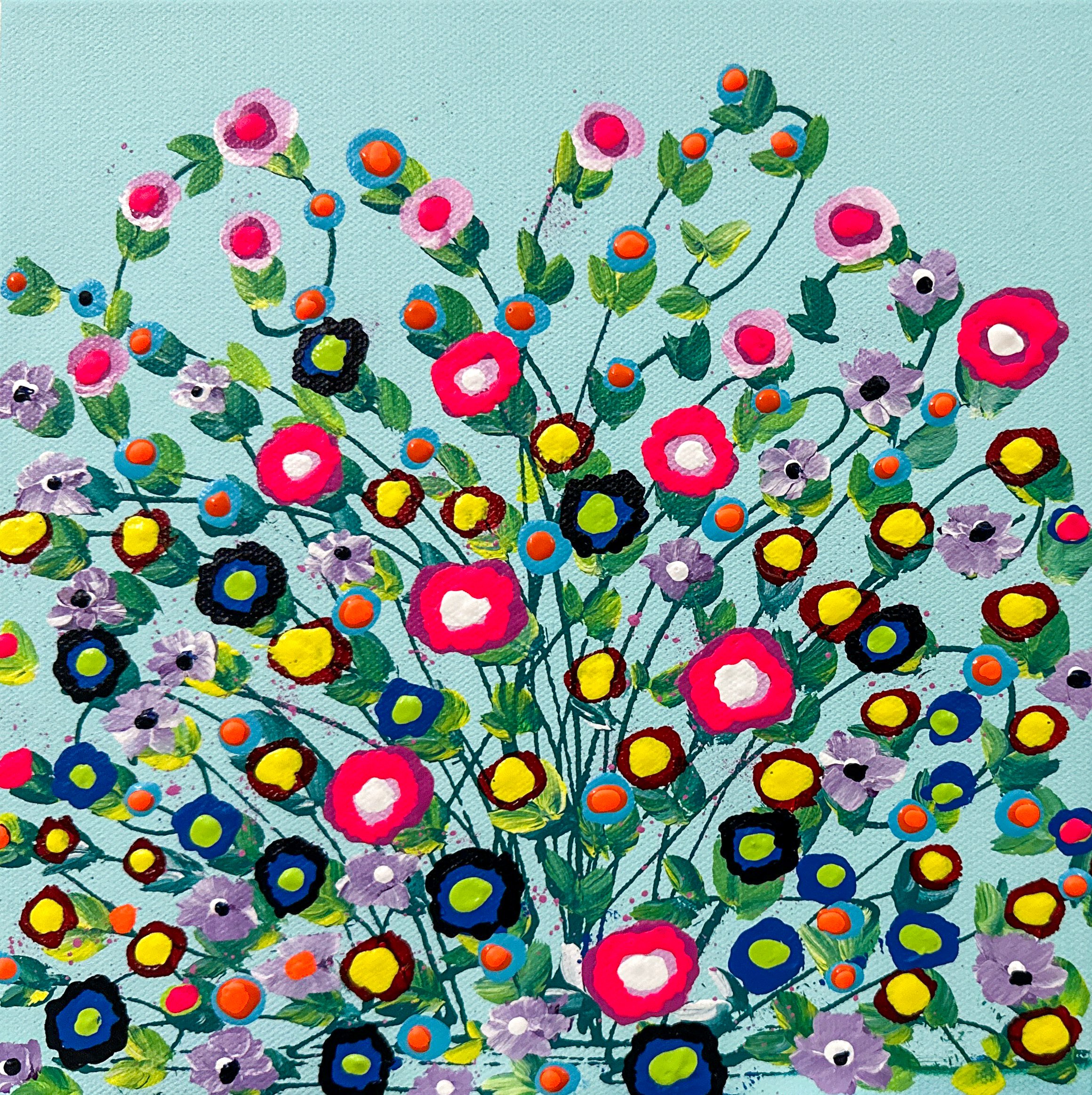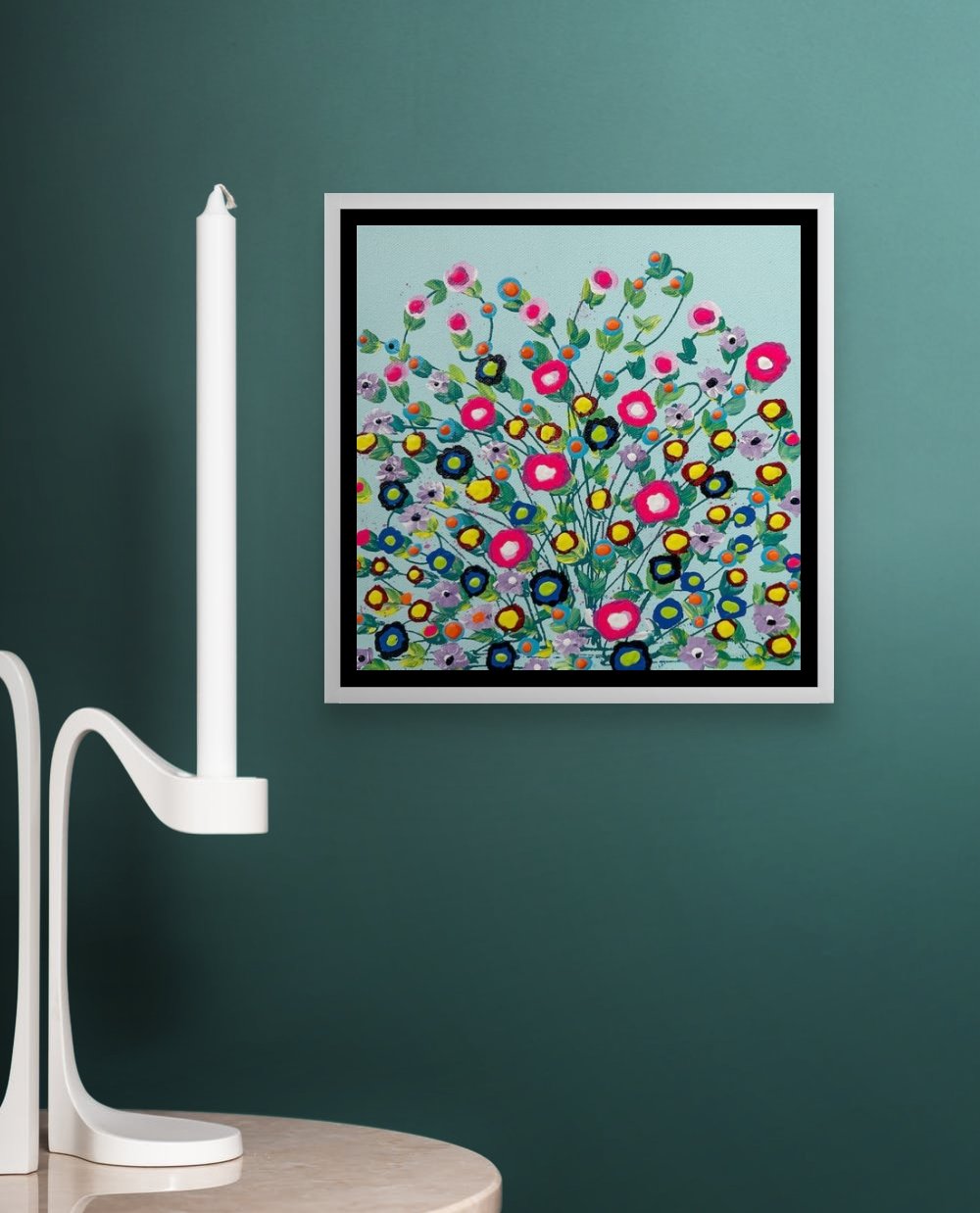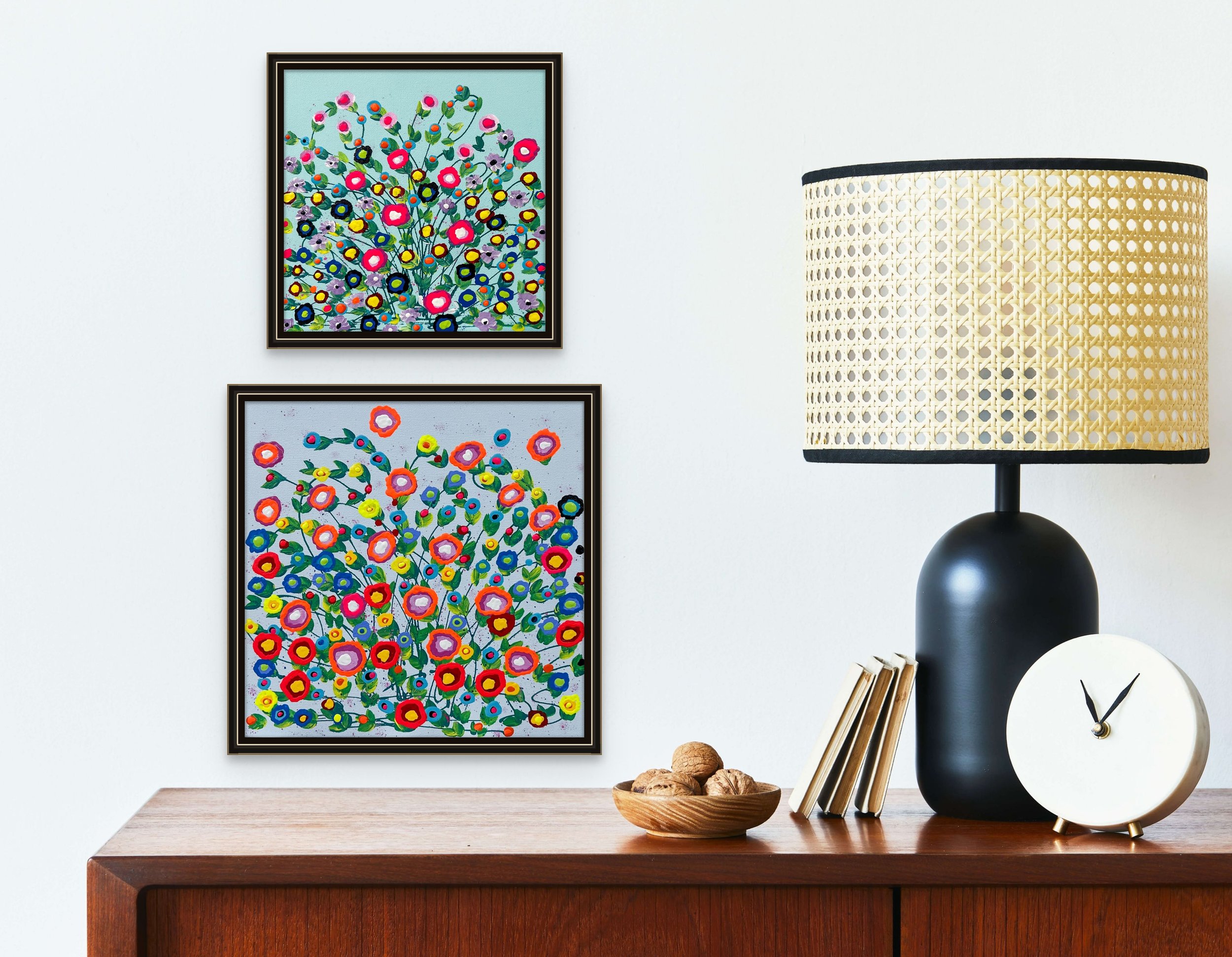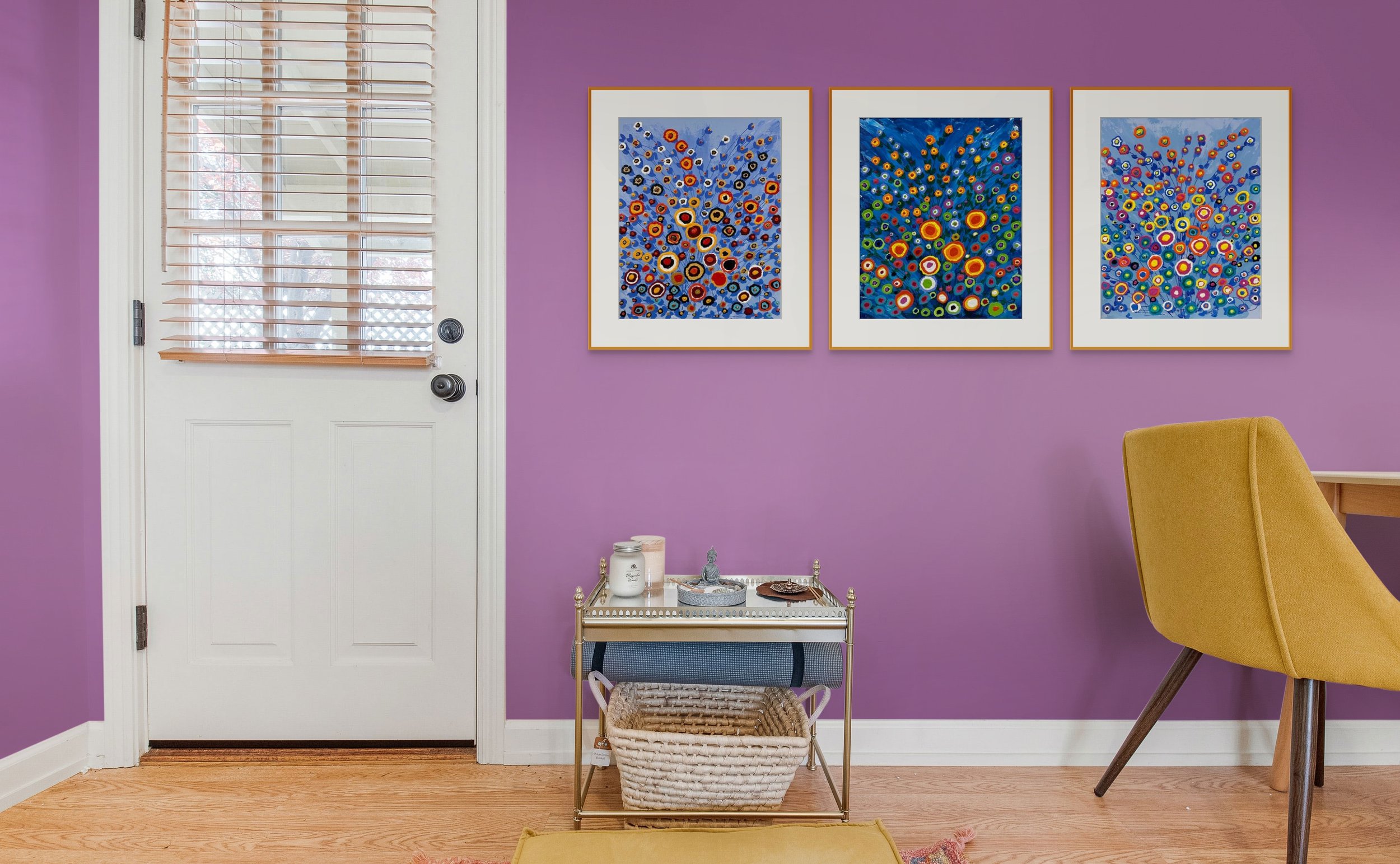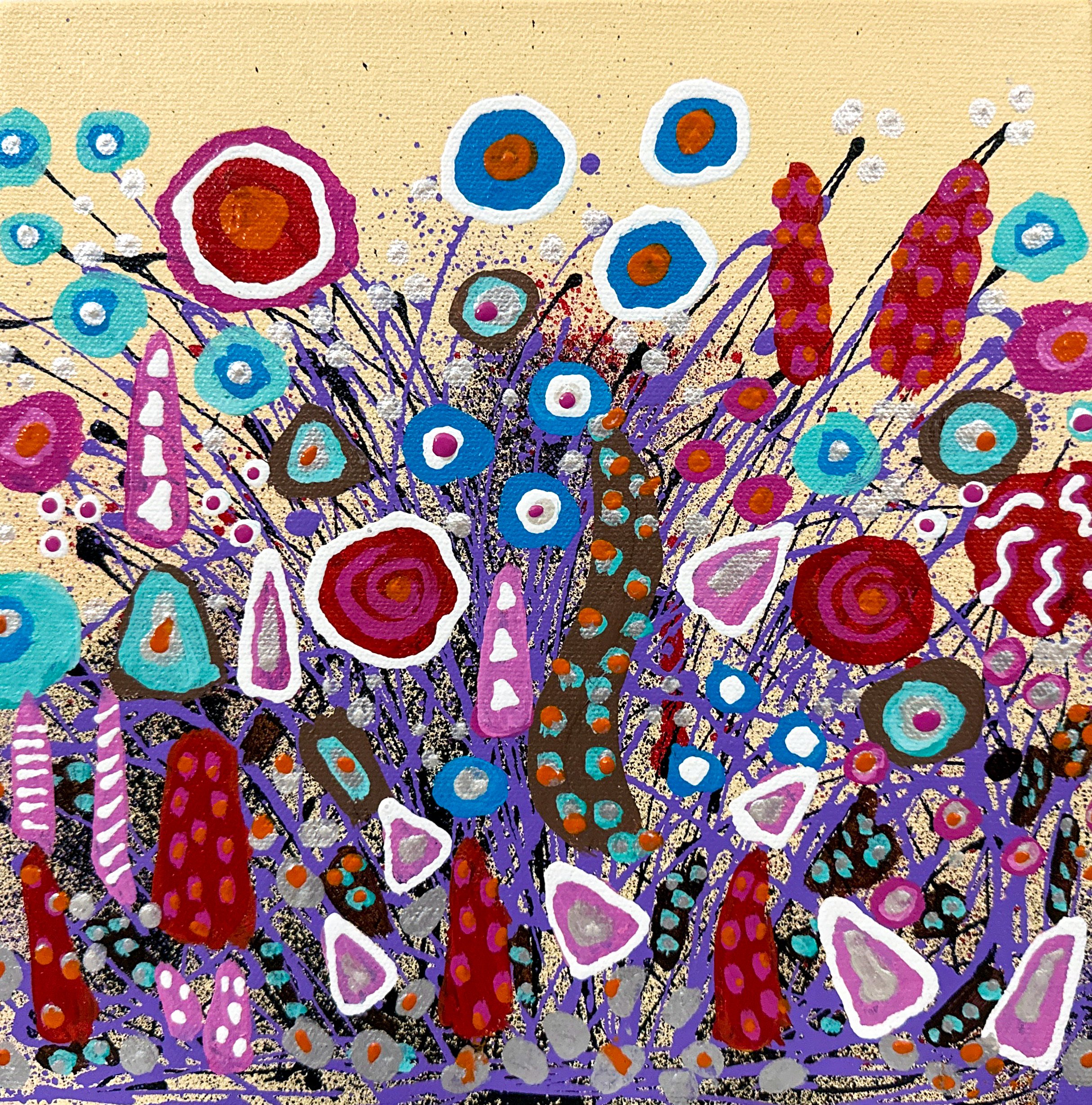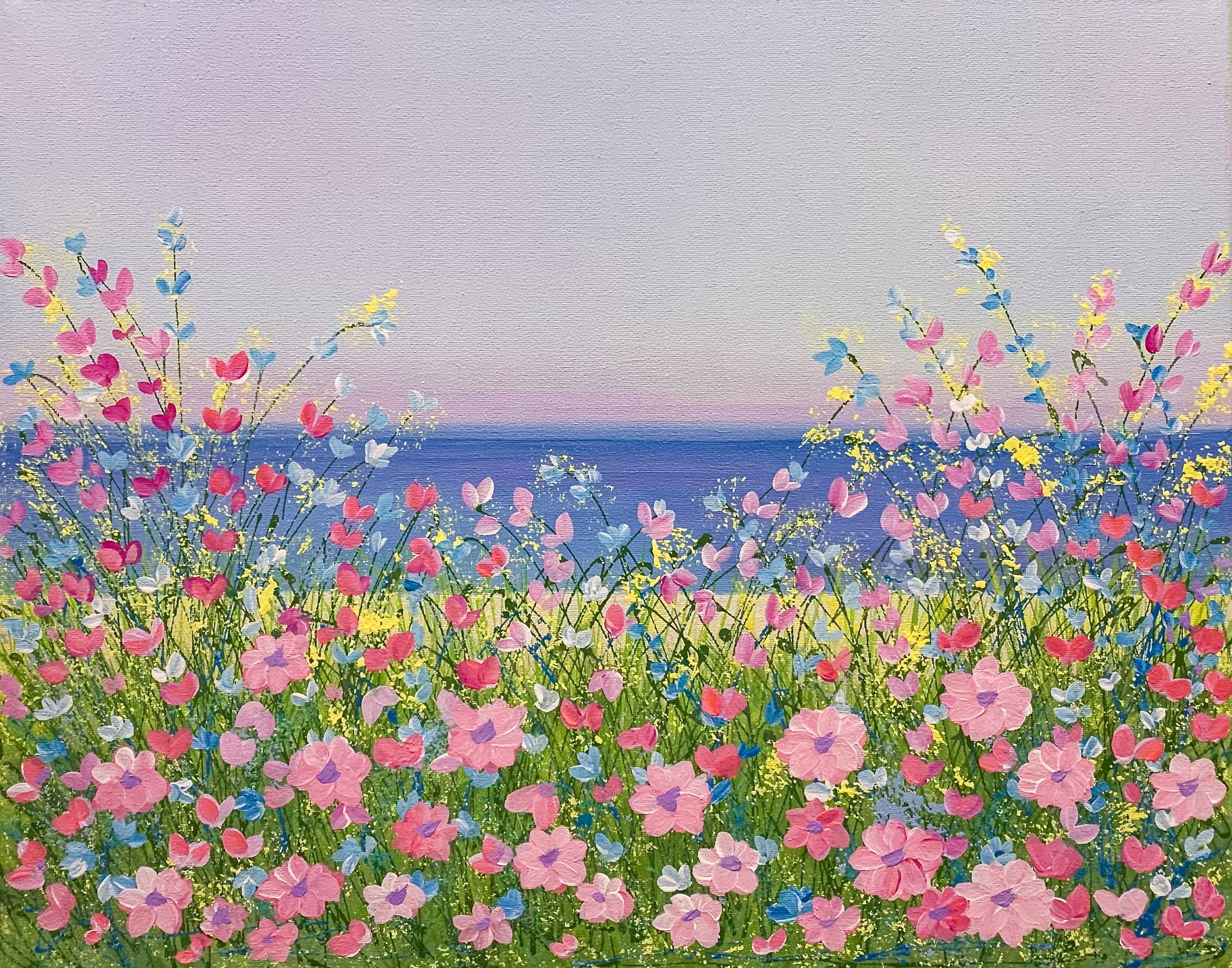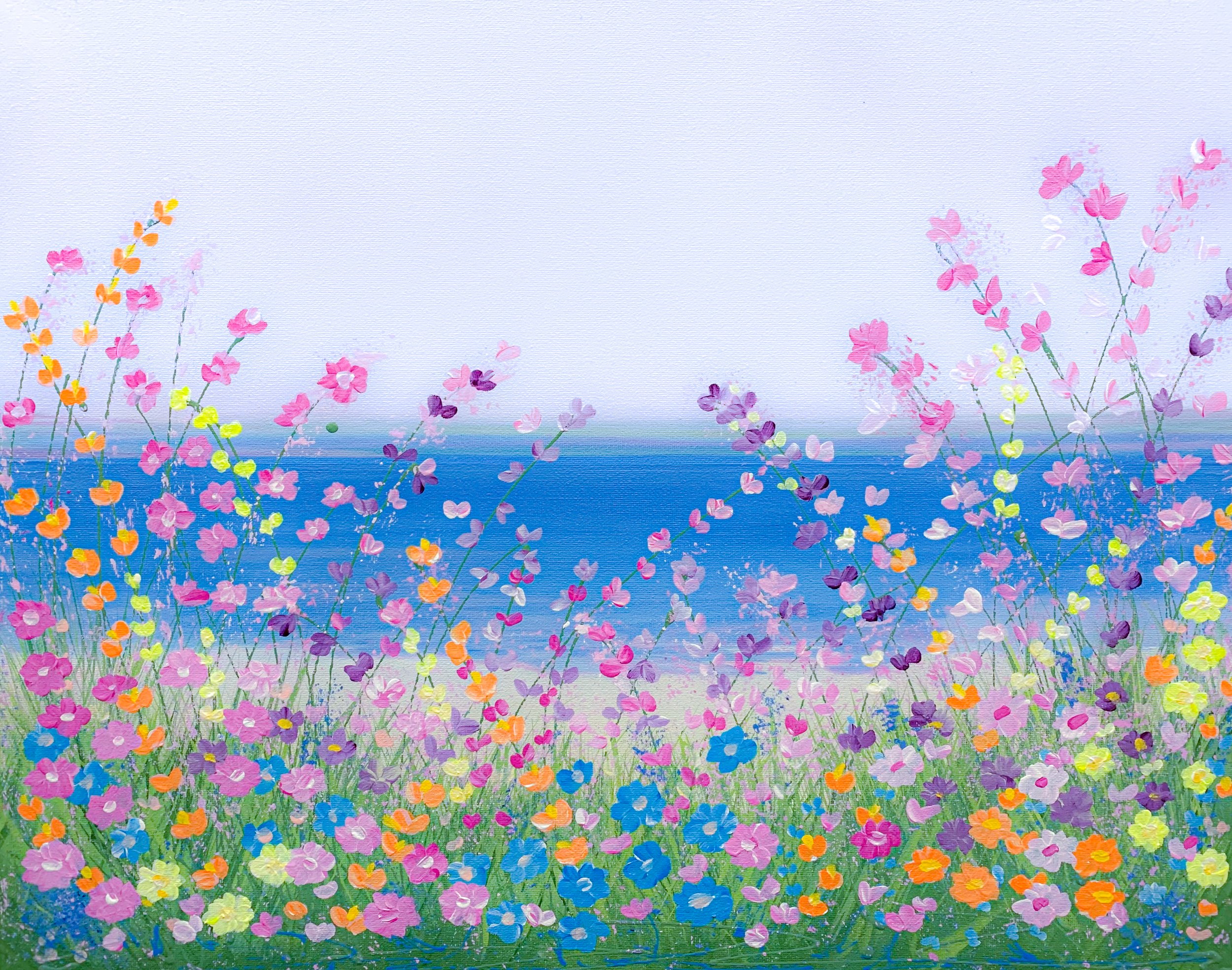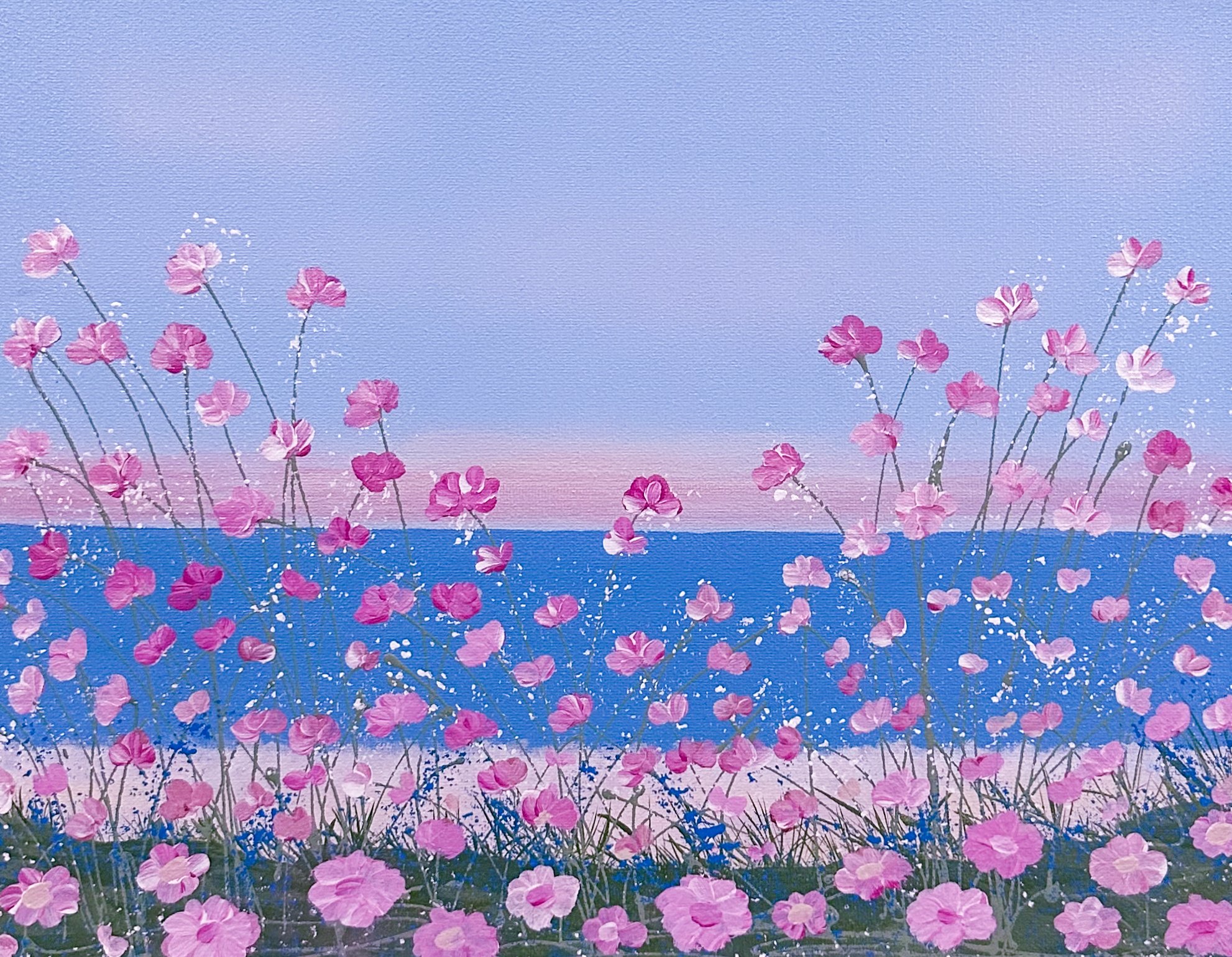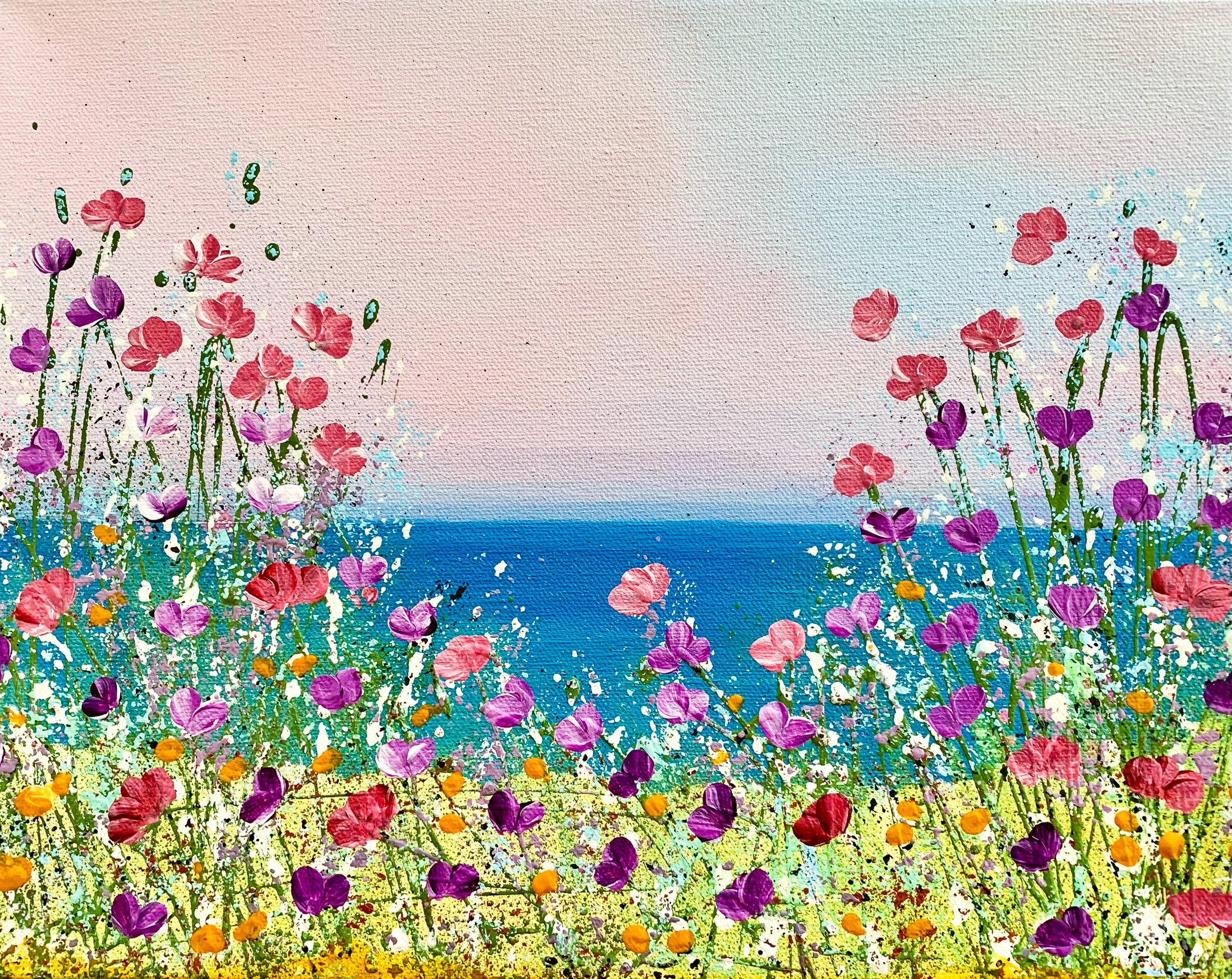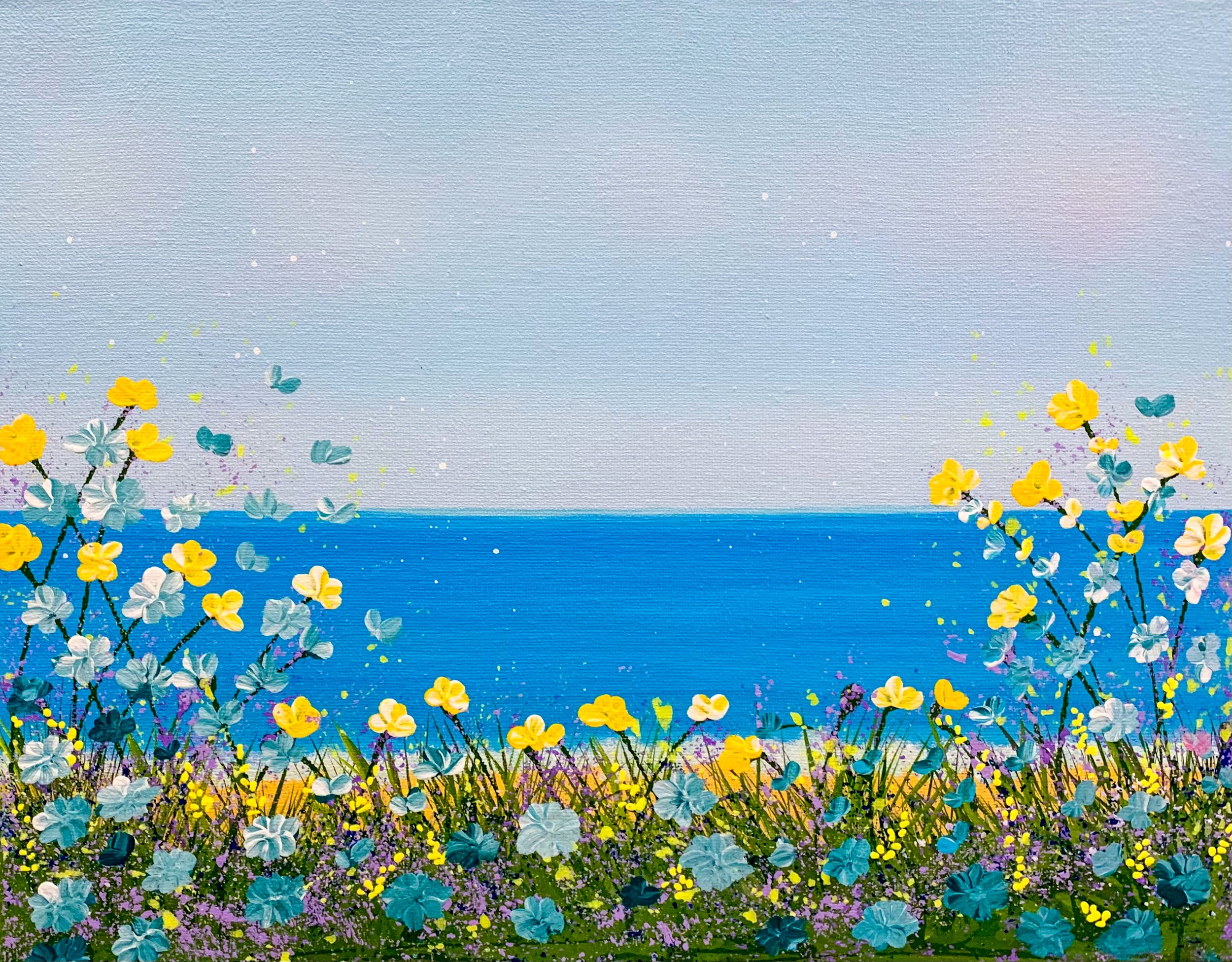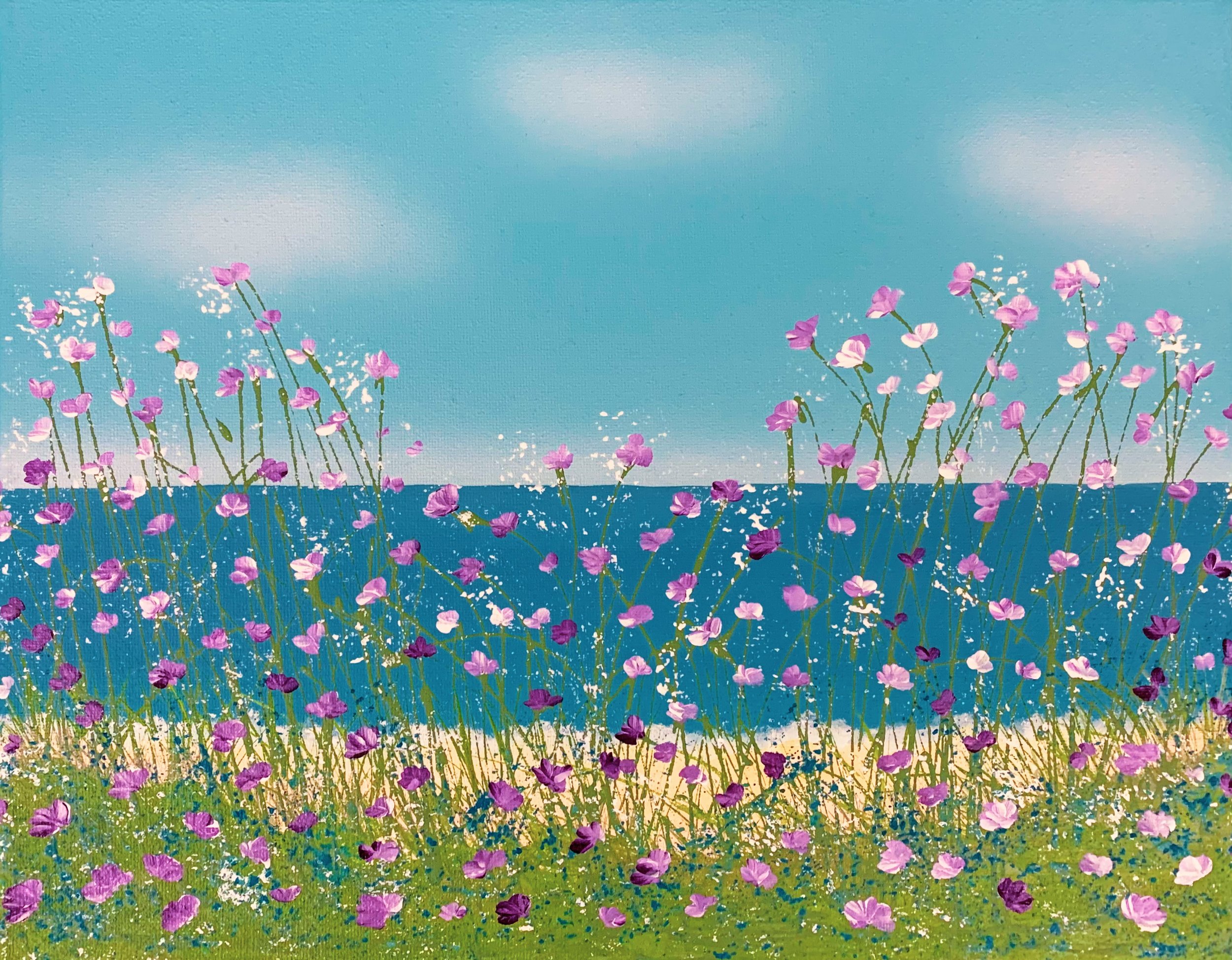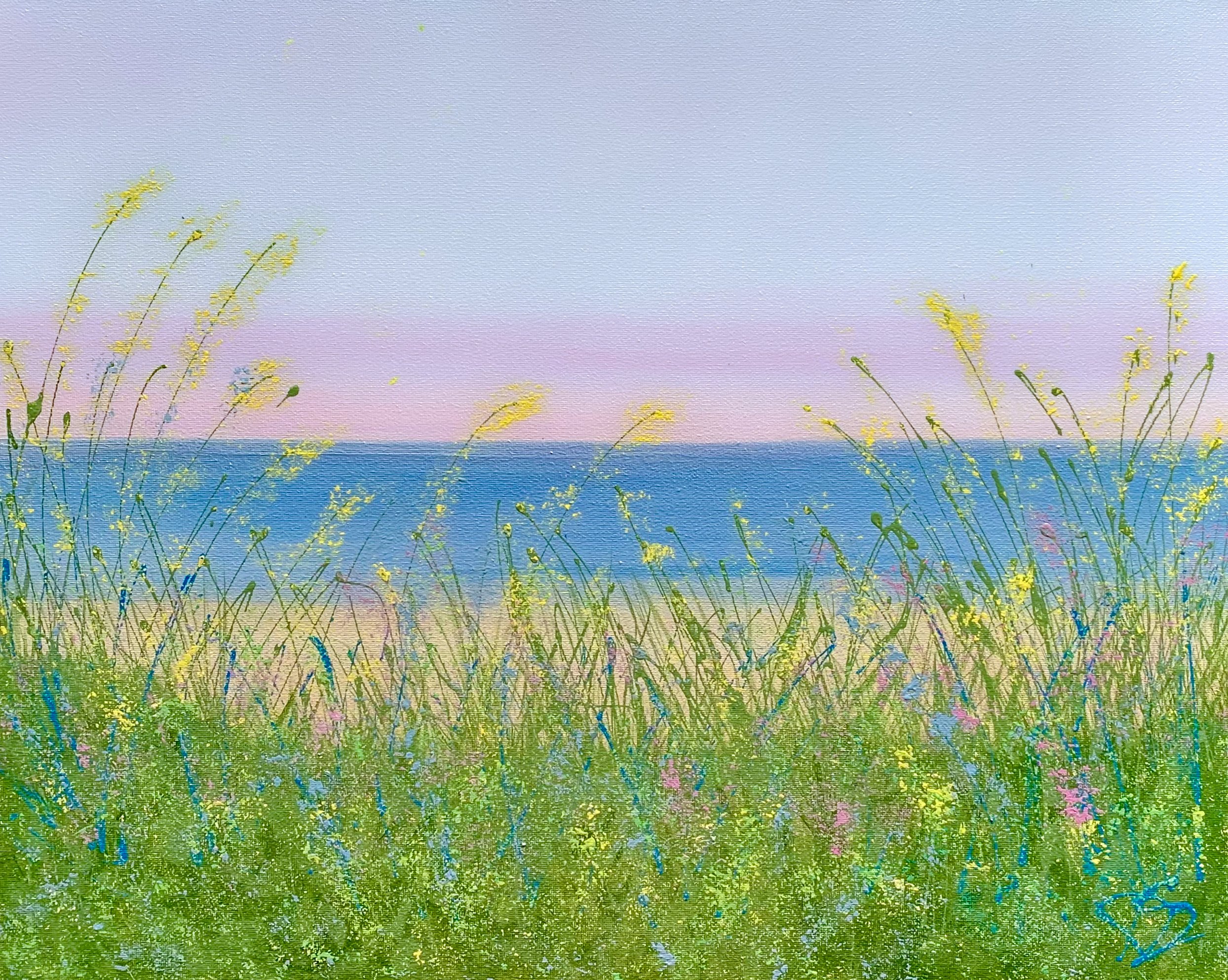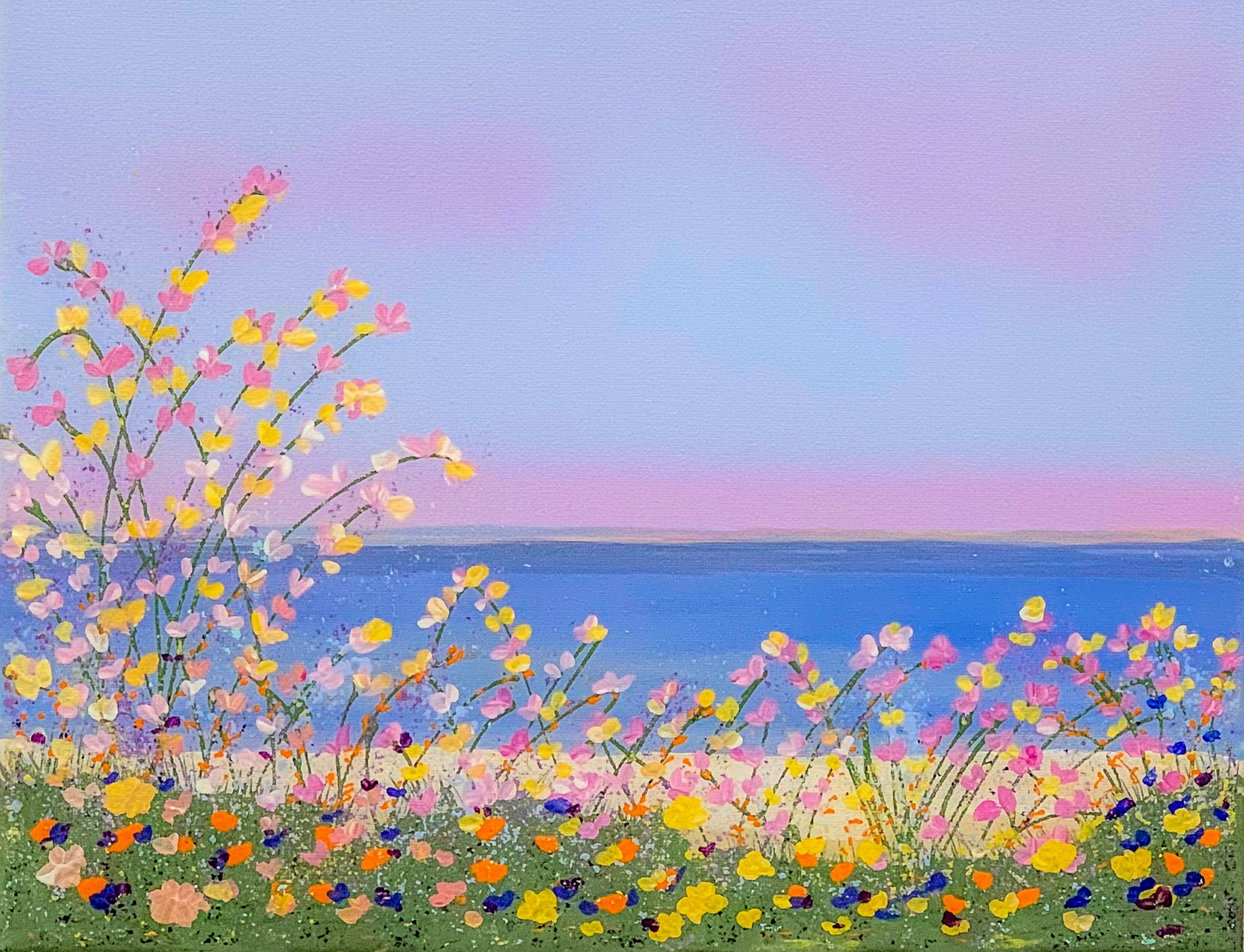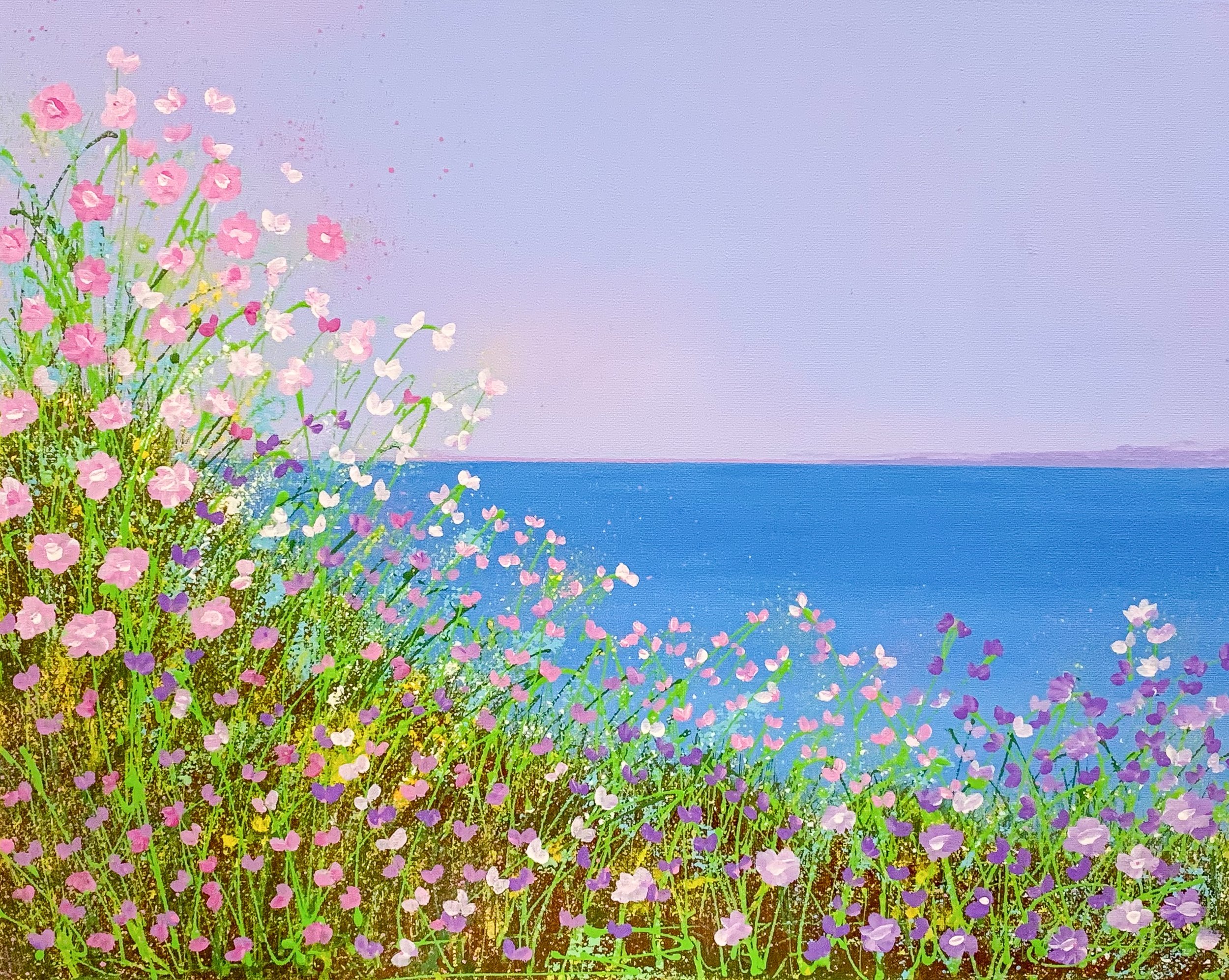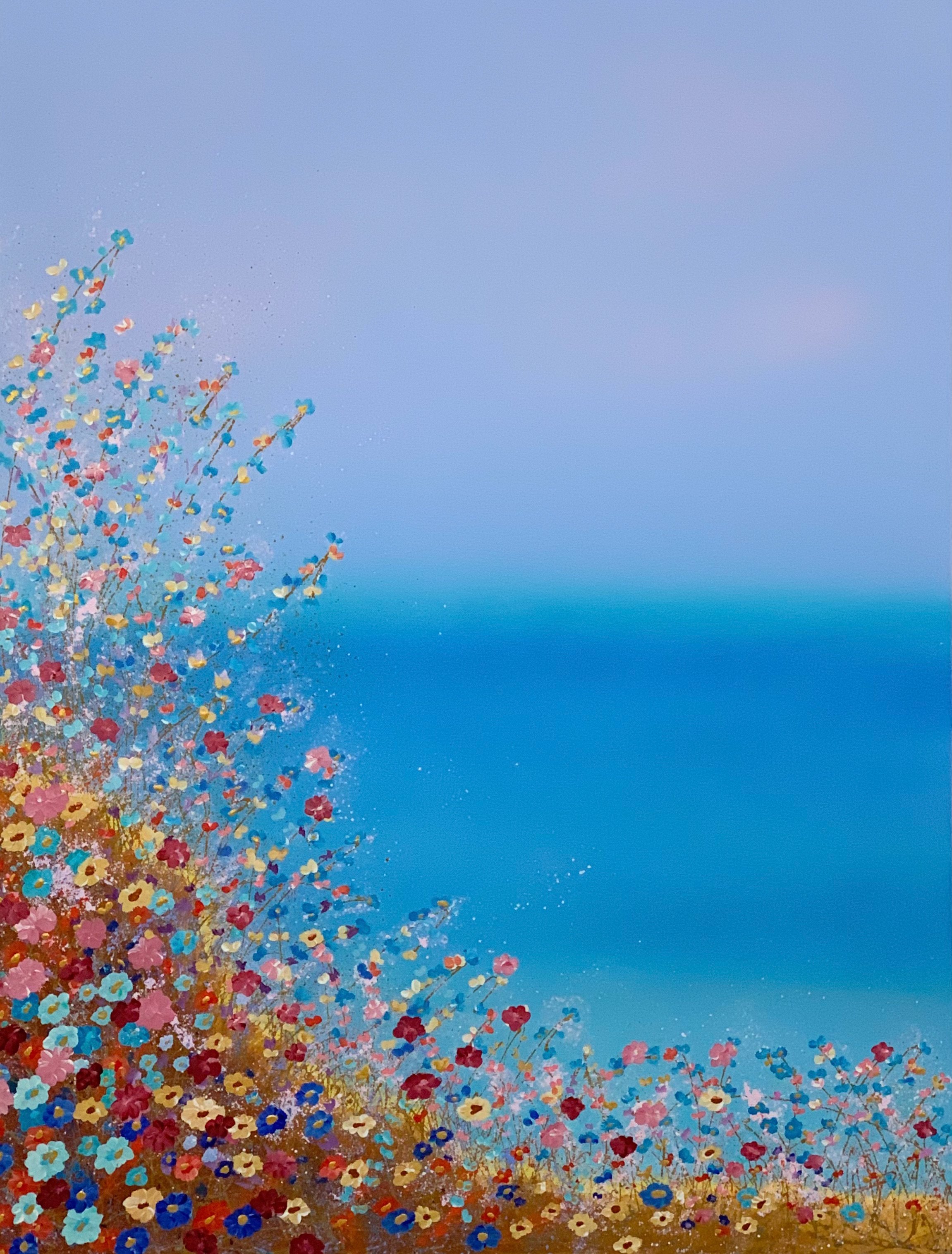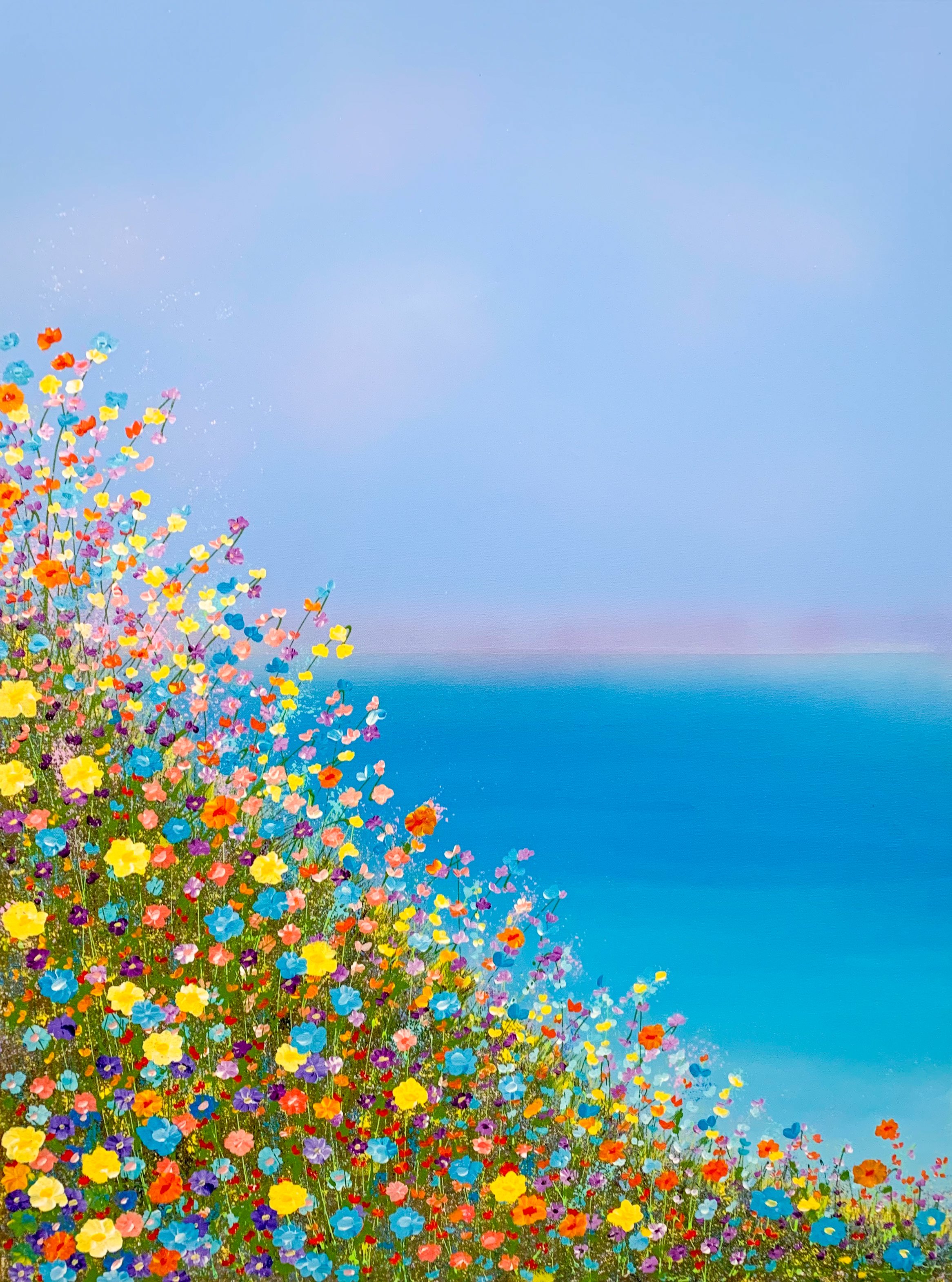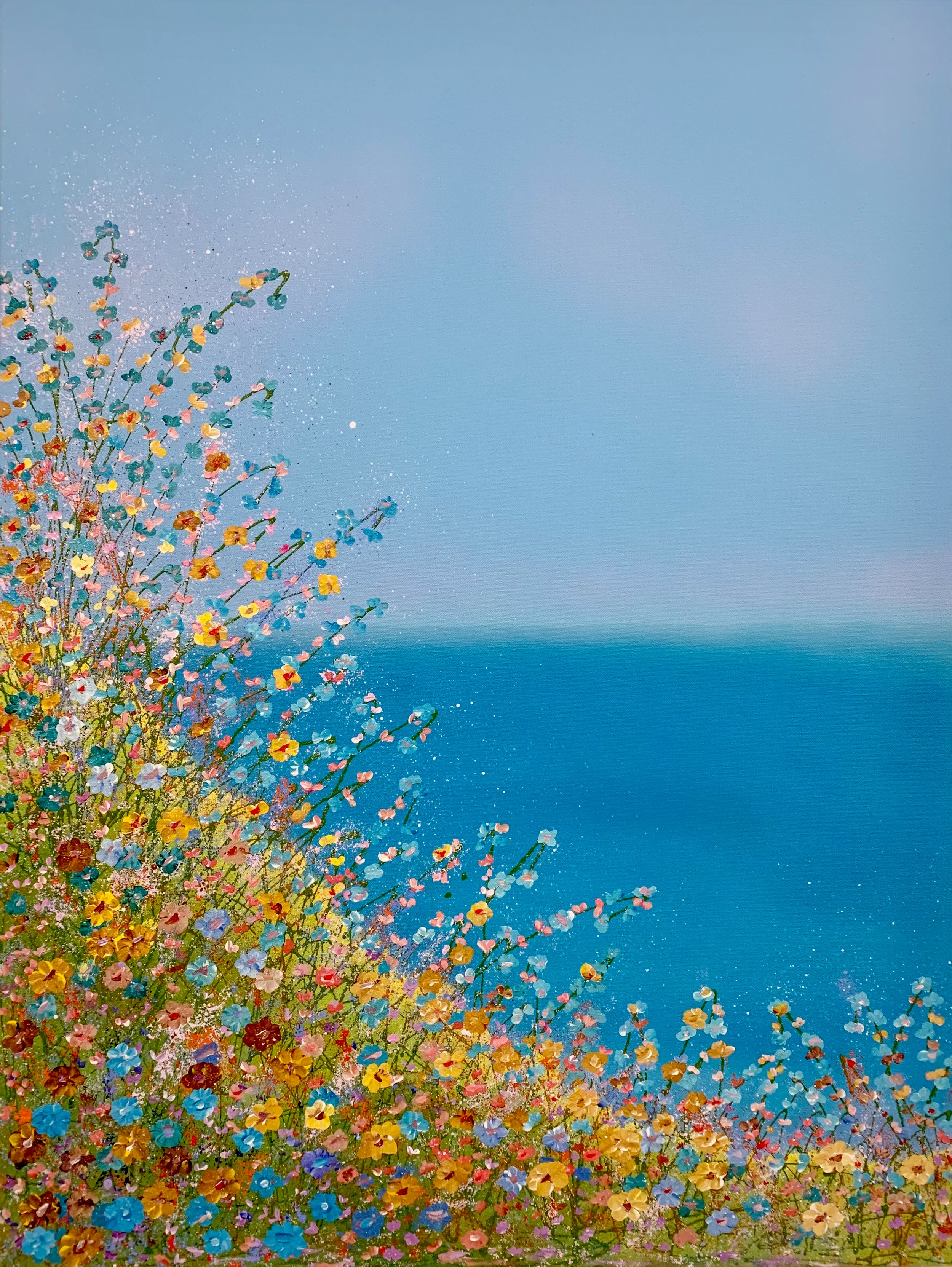More Evidence-Based Design Guidelines
There’s Evidence-based Design, and then there’s NOT Evidence-based Design.
Here are more evidence-based design art guidelines. Many of these guidelines come from “A Guide to Evidence-based Art” from The Center For Health Design, research by Ulrich and Gilpin, a case study on best practices in evidence-based design by the Mays Clinic at the MD Anderson Cancer Center, and so much more.
Waterscapes
They can be regional, generic, or seasonal. They should be calm and non-turbulent. Dramatic seascapes should be avoided, and flowing or trickling water might negatively impact full or non-functioning bladders.
Landscapes
They can be regional, generic, or seasonal. They should have visual depth or open foreground. Trees should have a broad canopy. Savannah and park-like landscapes are preferred by many. Vegetation should be lush. Empty park benches and sunsets should be avoided. The empty park bench might remind someone of loss and loneliness. A sunset might represent the end of life.
Figurative Art
Figurative art should be observational rather than interpersonal. This art should show smiling or emotionally positive faces. Figures can be diverse and appear in relaxed natural surroundings. However, figures that are too relaxed might negatively impact positive outcomes, especially for people with low motivation or in need of physical therapy.
Wildlife
Any wildlife imagery should be of animals widely considered non-threatening. Close-ups of large mammals looking directly at viewers should be avoided.
Still-life
Still-life can be used sparingly for variety.
Early in my evidence-based design career, I decided NOT to do Still-Life. I dislike drawing or painting Realism, especially as they did in the Middle Ages. I enjoy Impressionism and Expressionism, but I am an Abstract artist at heart. I have relatives who are super masterful at capturing hyper-realism. I greatly appreciate them and what they do, but it’s not anything I am interested in creating.
My studio is in Northern Michigan, and as much as I love all the wildlife, I prefer not to paint them. To capture their amazing beauty, I’ll leave that to my many local artist and photographer friends.
Figurative Art is another category I choose not to do. When I was a teen, people were often amazed at my ability to capture a person’s likeness with a Number 2 pencil. Again, it’s not something I am artistically interested in.
As an evidence-based design artist, I specialize in Waterscapes, Floralscapes (which AI says is a real word), and Landscapes. I like to go deep inside these categories and create art that strategically triggers the brain for health and happiness in others.
At first glance of this painting, it may seem as if there isn’t much deep strategy involved, but there is.
If you look at the sky, it’s a pretty blue, and it doesn’t shout or make too much of an impact on the brain. The sun and horizon are bright and cheerful, but their edges are soft and gentle. The evidence-based design purpose is to establish beauty without much impact and with no trauma. My goal was not to overwhelm the brain with too much beauty. The brain should register this area of the canvas as beautiful but mostly safe.
Photo of Lake Huron, one of the world’s largest lakes
Based on medical and scientific studies, hospital/medical facility patients also highly regard familiar nature scenes.
As our eyes see the water in the painting, there is a gradation of color. Very typical of Lake Huron (a familiar nature location for people in this area), the water remains mostly calm and non-turbulent.
I got trained to paint along New England's rocky, violent shores. Dramatic seascapes, which must be avoided in evidence-based design, are what I learned.
It was difficult, especially for my ego, but I chose to keep the water almost flat. I decided to use color (darker to lighter to almost aqua, much like Lake Huron) and brush movement to create water that is enjoyable to view but also calm and non-turbulent.
To create impact, I almost always choose abundant flowers (lush vegetation). Flowers almost always register in the brain as beautiful, representative of love, and safe. By de-emphasizing the sky and water (two areas of safety or potentially profound danger) and emphasizing the flowers (with little to no history of causing harm to humans), the overall composition helps to create feelings of well-being and happiness.
When I paint, my evidence-based design goal is not to create overwhelming beauty. This is what I was taught an artist should do. When I create evidence-based design compositions, my goal is to create art that triggers the brain to create dopamine (happiness chemicals).
Sometimes, I will add a little drama to the sky, as with this cloud below, which often appears like this over Lake Huron in the morning. Even though the cloud is loud, the colors are still soft and happy and the horizon line gently blends into the waveless water. The flowers, on the other hand, pop with color and a diversity of shapes of Impressionism.
Mackinac Memories by Dorothea Sandra, EDAC. Sold in 2025 to a collector in Fort Worth, Texas.
What Is The Definition Of Evidence-Based Design?
There are broad and specific definitions of evidence-based design.
Here is the definition from the National Library of Medicine:
“Evidence-based design is scientific analysis methodology that emphasizes the use of data acquired in order to influence the design process in hospitals. It measures the physical and psychological effects of the built environment on its users.” (National Library of Medicine, National Institutes of Health)
Even Wikipedia now has a definition:
“Evidence-based design (EBD) is the process of constructing a building or physical environment based on scientific research to achieve the best possible outcomes.” (Wikipedia)
The definition I like best is from The Center For Health Design.
“…the process of basing decisions about the built environment on credible research to achieve the best possible outcomes.” (www.healthdesign.org/edac)
The built environment (people-built surroundings where human activity occurs) includes art, and since my EDAC (evidence-based design) training and certification, I have sold hundreds of paintings based on these definitions.
Some of my first Great Lakes/Lakeside Lovelies paintings using Evidence-Based Design training.
Based on medical and scientific studies, hospital/medical facility patients highly regard familiar nature scenes.
When I first started creating art using evidence-based design, my first creations were what I called Lakeside Lovelies and Great Lakes Lovelies (above). They were familiar nature scenes, mainly along Highway 23 in Northern Michigan. Half of my inspiration came from Lake Huron and the Straits of Mackinac. The air in this area is clear and clean, so my eyes can almost always catch super-crisp images.
The other half of my inspiration came from the abundance and variety of flowers around town, the Upper Penisula and Northern counties, and within my own art studio’s yard. Who would have thought it? Here is a bush—and of all places—next to my garage that inspired many of my paintings. In this area, this bush is a plentiful sight in the Spring, which also makes its stems a familiar nature scene.
Credible research told me that local natural landscapes helped to achieve the best possible health outcomes, and I strongly dislike painting realism (which isn’t a requirement in evidence-based design), so I happily went with a floral contemporary Impressionism style. (Thank you, Monsieur Monet.)
At the beginning of my journey as an evidence-based design artist and having a studio in Northern Michigan (where a few people still have trophy deer heads and bear skins on their living room walls), I decided to have a little fun and help promote art in the area with the new evidence-based design paintings and videos. Here’s an older video. Enjoy!
Is Evidence-Based Design Totally New?
Is Evidence-Design Totally New?
If you asked the 6th BCE Greeks of Epidaurus, they might take you to one of the most celebrated healing centers of the classical world—the Asclepieion hospital. In their hospital, patient rooms faced eastward. Why? It is believed the rooms were intuitively designed and placed toward the sun to promote healing.
Many centuries later, many movements from different countries came together in the 1970s to create a new field called evidence-based design.
Who are the people whose forces created this new discipline? Doctors, Scientists, Architects, Interior Designers, Psychologists, Sociologists, Anthropologists, and many others.
The Healing Window by Dorothea Sandra, EDAC, 36”x48”
This artist’s journey into Evidence-Based Design
Photo from the back of McLaren Northern Hospital, Petoskey, Michigan
I am known by many titles in the art world: Artist Of Happiness; a modernizer of traditional woodland compositions; a Great Lakes artist; a 21st-century experimental artist; creator of the evidence-based design collection, Symphonies Of Love; creator of the Smart City Art Collection; and more.
At the beginning of my evidence-based design artistic journey, I chose to create a painting depicting a view from a hospital room. The background of The Healing Window features Little Traverse Bay, as seen from the back parking lot of McLaren Northern Hospital in Petoskey, Michigan.
While composing this painting, I imagined myself in one of the patient rooms at McLaren Northern, looking out the window.
I also imagined myself in a patient room or in a healthcare lobby or a waiting area.




Artists always have lots of choices to make. Early in my evidence-based design floral art career, I chose creating happiness (triggering dopamine) over painting realism. My reason? I figured I would have more power to create happiness if I had more artistic power of the flowers. Not only did realism limit my ability to create happiness (dopamine), but according to medical and scientific research, traditional still-life wasn’t an art category most favored within evidence-based design.
So, is evidence-based design totally new? Yes and no. The flowers in this artwork are modern, cheerful, uplifting, and based on current evidence-based design best practices. However, I also wanted to pay homage to the accomplishments of those who came before us by incorporating elements that, especially in the design texture of the vases, evoke a rough, ancient Greek Asclepieion aesthetic.
Did You Know This About Art And Health?
Did you know many evidence-based design paintings focus on the impact the art has on the brain?
Did you know many evidence-based design paintings focus on the impact the art has on the brain?
The focus of this painting is not the art. The purpose of this piece is to create an uplifting mood of peace and happiness.
Wildflower Wonderland by Dorothea Sandra, EDAC (60”x96”)
The painting above is an evidence-based design floral that incorporates information from many medical and scientific research studies on the brain, art, and health.
The question should be, “Does this painting make viewers feel uplifted and happy?”
What matters most is that the piece triggers the brain to create chemicals that actually produce happy feelings.
Today we have fabulous technology to study the brain and see how art impacts it. In 2023, I was interviewed by the International + Mind Lab at the Center for Applied Neuroaesthetics, Pedersen Brain Science Institute at the Johns Hopkins University School of Medicine for my work creating evidence-based design art.
The principal investigator of the study I was in, Susan Magsamen, is a leader in this field and in her book, Your Brain on Art, How the Arts Transform Us, she writes: “New research, discoveries, and applications continue to mount. The sheer magnitude of this work is exceptional, and it promises to continue to accelerate. In the near future, as ever-more-sophisticated neuroaesthetic research becomes capable of measuring the effect of the arts on neural networks and those 600-plus mechanisms already identified, we will know more about how the arts affect us and how they can further benefit every aspect of our lives.” (p231)
During my interview with the Johns Hopkins University School Of Medicine team, I emphasized that while I am creating evidence-based design paintings, my primary focus is not on creating beautiful art.
My focus while I am painting is to use established evidence-based design guidelines and principles to create art that impacts the brain so happy chemicals (like dopamine) are created.
With today’s evidence-based design art, the question isn’t, “Do you like this?” The question is, “How does this painting make you feel?”
Take A Peek Inside My Book, 100 DAYS OF HAPPY HAPPY ART, EVIDENCE-BASED DESIGN.
Click the book cover to view.
Did You Know This About Our Brains And Art?
Did you know a growing body of research shows conclusively that our physical environments (rooms, buildings, walls, etc.) actually have an impact on our quality of life?
Did you know a growing body of research shows conclusively that our physical environments (rooms, buildings, walls, etc.) actually have an impact on our quality of life?
Evidence-based design has been defined as the process of basing design decisions about the built environment on credible research to achieve the best possible outcomes.
When inside built environments our brains get triggered by all kinds of things like color, lighting, texture, and especially art. In one study done on hospital waiting areas, physical and ambient properties influenced patient experiences. Areas associated with higher physical attractiveness reduced anxiety, were perceived to provide better quality of care, and were perceived to have shorter waiting times.
“Similarly, a waiting area with a nouveau (non-traditional) style was associated with lower self-reported stress and higher patient satisfaction than a traditional style.” (Improving the Patient Experience, California Healthcare Foundation)
Fun Fun Everywhere is a playful evidence-based design work of art. It’s a fun painting designed for attractiveness in a nouveau/non-traditional style.
Happy Together With Friends by Dorothea Sandra, EDAC
As I am creating this style of playful evidence-based art, there’s always the challenge of balance. One goal is to trigger the brain to create lots of feelings of fun and happiness without causing any stress. Another goal is to achieve high “distraction” levels of interest, again, without causing stress by overwhelming the viewer with too many details.
Especially when people are troubled or in pain, research studies show that happy art distractions will very positively impact the quality of human life.
For Happy Together With Friends, I was going for the moods of playfulness, happiness, and fun. I also wanted to add in a dash of ironic quirkiness with the hope of making someone—who just didn’t feel good or well—crack a smile.
I have a painting, similar to this one, in the cancer wing of a hospital. When coming out of the blood draw area and on the way to the infusion center, there it is.
Cancer patients, family members, and staff tell me all the time just how much they enjoy that painting. I’ve always suspected it’s the ironic quirkiness built into the painting’s many layers that triggers the brain to create happy emotions, especially at solemn times like this.
These paintings were created—not for their realism or beauty—but to trigger the brain to create the feelings of fun, happiness, and joy.
Take a look inside my book, 100 Days Of Happy Happy Art, Evidence-Based Design
There’s even a chapter on neuroscience and art.
Did You Know This About Our Brains And Art?
Did you know a growing body of research shows conclusively that our physical environments (rooms, buildings, walls, etc.) actually have an impact on our quality of life?
Did you know a growing body of research shows conclusively that our physical environments (rooms, buildings, walls, etc.) actually have an impact on our quality of life?
Evidence-based design has been defined as the process of basing design decisions about the built environment on credible research to achieve the best possible outcomes.
When inside built environments our brains get triggered by all kinds of things like color, lighting, texture, and especially art. In one study done on hospital waiting areas, physical and ambient properties influenced patient experiences. Areas associated with higher physical attractiveness reduced anxiety, were perceived to provide better quality of care, and were perceived to have shorter waiting times.
“Similarly, a waiting area with a nouveau (non-traditional) style was associated with lower self-reported stress and higher patient satisfaction than a traditional style.” (Improving the Patient Experience, California Healthcare Foundation)
Fun Fun Everywhere is a playful evidence-based design work of art. It’s a fun painting designed for attractiveness in a nouveau/non-traditional style.
Happy Together With Friends by Dorothea Sandra, EDAC
As I am creating this style of playful evidence-based art, there’s always the challenge of balance. One goal is to trigger the brain to create lots of feelings of fun and happiness without causing any stress. Another goal is to achieve high “distraction” levels of interest, again, without causing stress by overwhelming the viewer with too many details.
Especially when people are troubled or in pain, research studies show that happy art distractions will very positively impact the quality of human life.
For Happy Together With Friends, I was going for the moods of playfulness, happiness, and fun. I also wanted to add in a dash of ironic quirkiness with the hope of making someone—who just didn’t feel good or well—crack a smile.
I have a painting, similar to this one, in the cancer wing of a hospital. When coming out of the blood draw area and on the way to the infusion center, there it is.
Cancer patients, family members, and staff tell me all the time just how much they enjoy that painting. I’ve always suspected it’s the ironic quirkiness built into the painting’s many layers that triggers the brain to create happy emotions, especially at solemn times like this.
These paintings were created—not for their realism or beauty—but to trigger the brain to create the feelings of fun, happiness, and joy.
Take a look inside my new book, 100 Days Of Happy Happy Art, Evidence-Based Design
There’s even a chapter on neuroscience and art.
Did You Know This About Art And Health?
Did you know many evidence-based design paintings focus on the impact the art has on the brain?
Did you know many evidence-based design paintings focus on the impact the art has on the brain?
The focus of this painting is not the art. The purpose of this piece is to create an uplifting mood of peace and happiness.
Peace And Happiness by Dorothea Sandra, EDAC (60”x96”)
The painting above is an evidence-based design floral that incorporates information from many medical and scientific research studies on the brain, art, and health.
The question should be, “Does this painting make viewers feel uplifted and happy?”
What matters most is that the piece triggers the brain to create chemicals that actually produce happy feelings.
Today we have fabulous technology to study the brain and see how art impacts it. I was recently interviewed by the International + Mind Lab at the Center for Applied Neuroaesthetics, Pedersen Brain Science Institute at the Johns Hopkins University School of Medicine for my work creating evidence-based design art.
The principal investigator of the study I was in, Susan Magsamen, is a leader in this field and in her book, Your Brain on Art, How the Arts Transform Us, she writes: “New research, discoveries, and applications continue to mount. The sheer magnitude of this work is exceptional, and it promises to continue to accelerate. In the near future, as ever-more-sophisticated neuroaesthetic research becomes capable of measuring the effect of the arts on neural networks and those 600-plus mechanisms already identified, we will know more about how the arts affect us and how they can further benefit every aspect of our lives.” (p231)
During my interview with the Johns Hopkins School Of Medicine team, I emphasized that while I am creating evidence-based design paintings, my primary focus is not on creating beautiful art.
My focus while I am painting is to use established evidence-based design guidelines and principles to create art that impacts the brain so happy chemicals (like dopamine) are created.
With today’s evidence-based design art, the question isn’t, “Do you like this?” The question is, “How does this painting make you feel?”
Take A Peek Inside My New Book, 100 DAYS OF HAPPY HAPPY ART, EVIDENCE-BASED DESIGN.
Click the book cover to view.
Did You Know This About The Brain And Art?
Did you know many scientists, researchers, and medical experts have been studying our brains and art?
Did you know many scientists, researchers, and medical experts have been studying our brains and art?
Their many credible studies have even resulted in creating actual guidelines for evidence-based designers and artists to follow while creating designs/art that positively impacts the human brain and emotions.
With landscapes, waterscapes, and garden scenes, one guideline is to have visual depth or openness in the immediate foreground. A reason for this is that the depth or openness creates an absence of a threat or ambiguity—two things many humans do not like or fear.
Another guideline based on credible scientific/medical studies is to offer designs with warmer seasons, verdant vegetation, and flowers in bloom. Something I like to add to my art—calm or non-turbulent waters are also well received by the human mind and emotions.
I like to experiment with evidence-based design, so in this 1:22 minute video on 21st century Great Lakes art, many of these paintings feature non-turbulent water along with lush vegetation and flowers in bloom. The video’s theme was today’s Great Lakes art, but many of the paintings were created using evidence-based design guidelines developed by scientists, researchers, and medical experts.
Here are some close-up views of sold paintings that were created using many evidence-based principles and guidelines. In addition to meeting the evidence-based design guidelines, I build into each painting artistic qualities that trigger our brains to create feelings of happiness and joy. I’m always asked to do commissions of these, and they usually sell not long after being put on display. One newspaper writer referred to me an artist of happiness and hope. I believe it is because I translate very credible scientific/medical study results into works of art.
When I paint, my goal is not to reflect beauty in nature. My goal goes much deeper. It is to use the art to trigger the brain to create feelings of happiness.








































